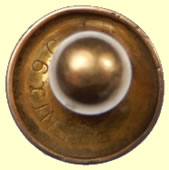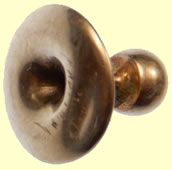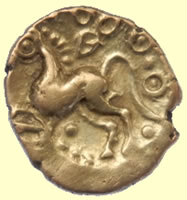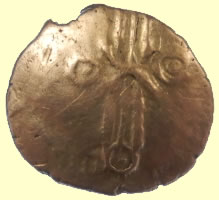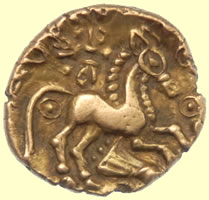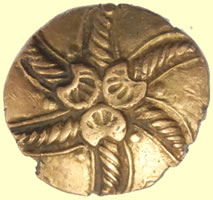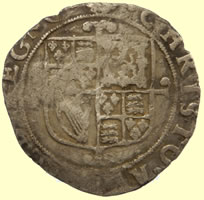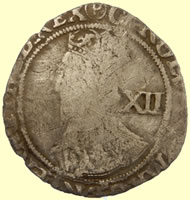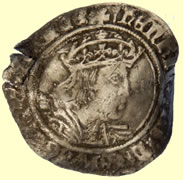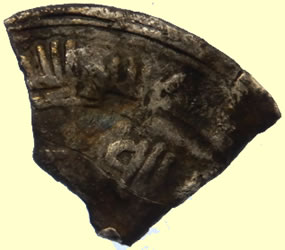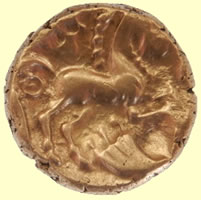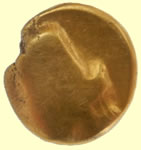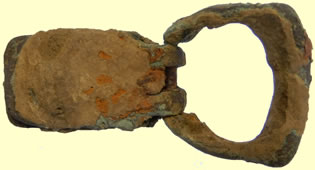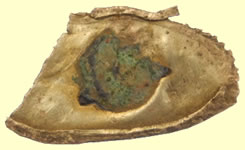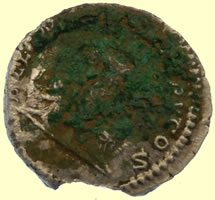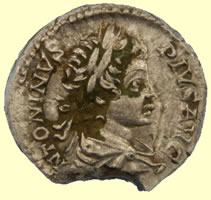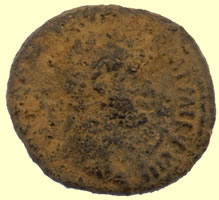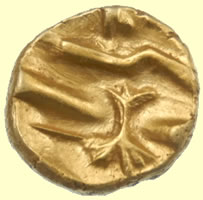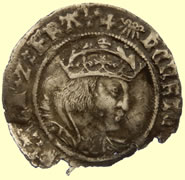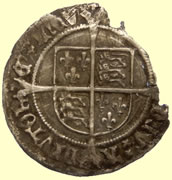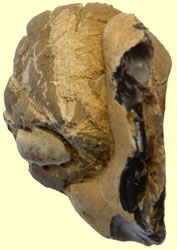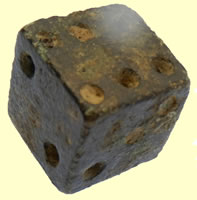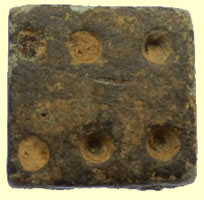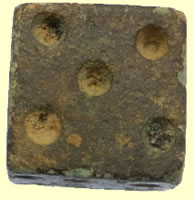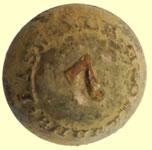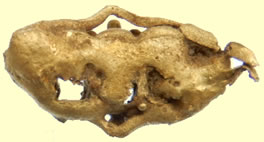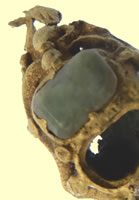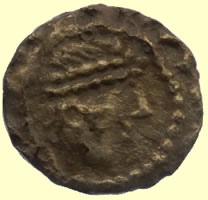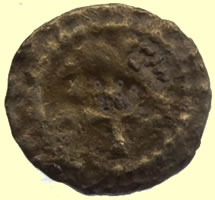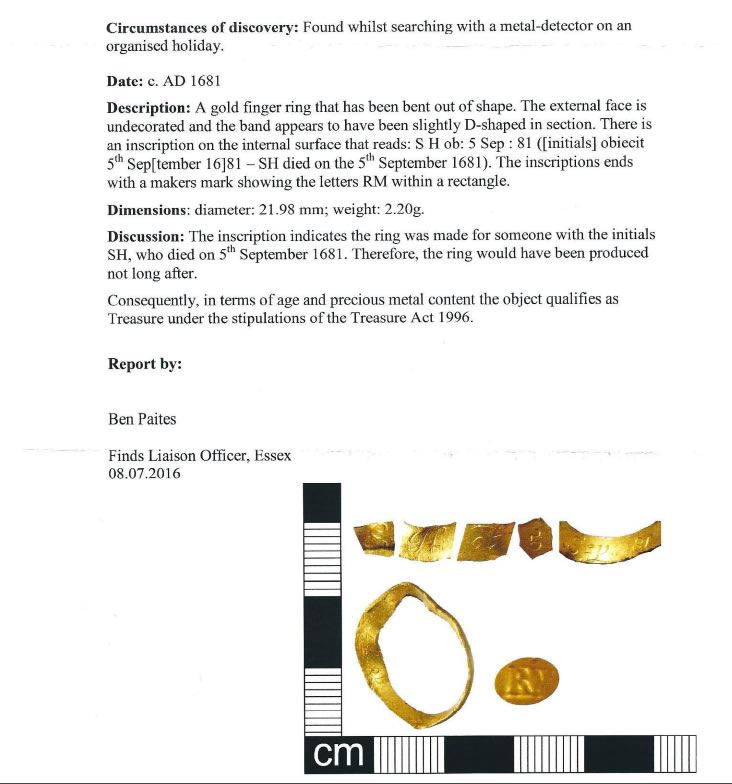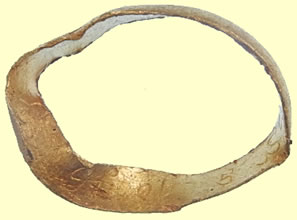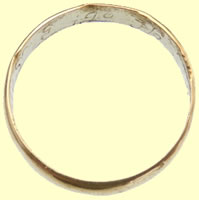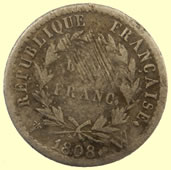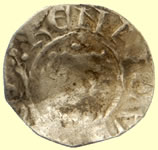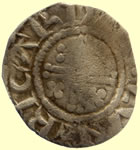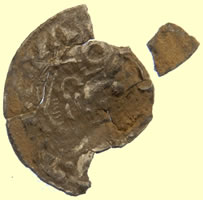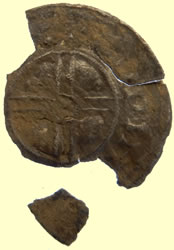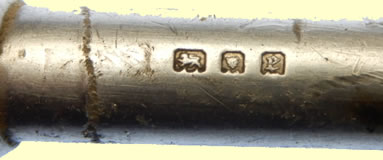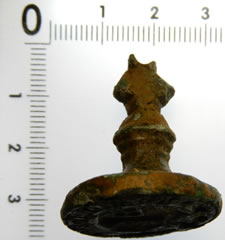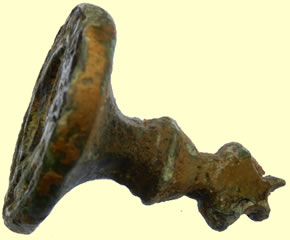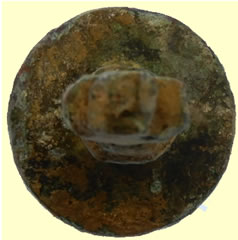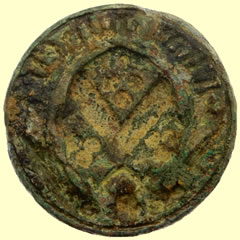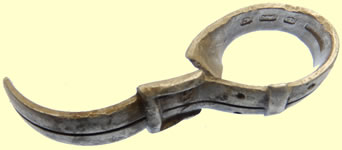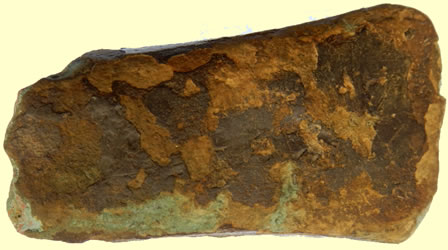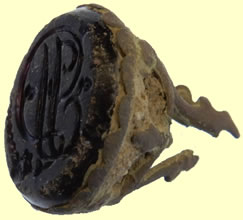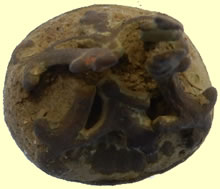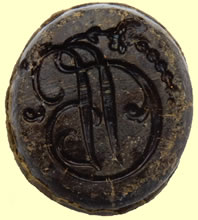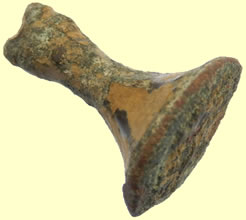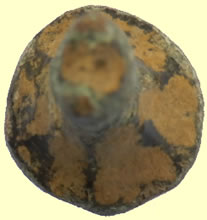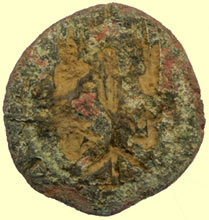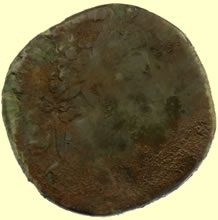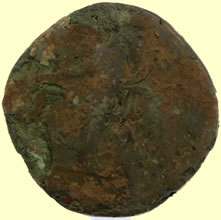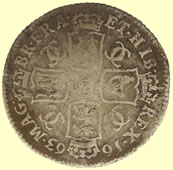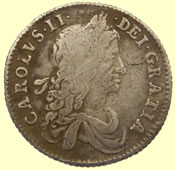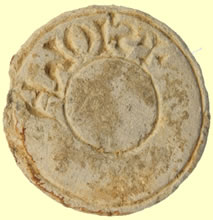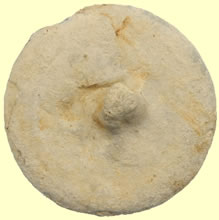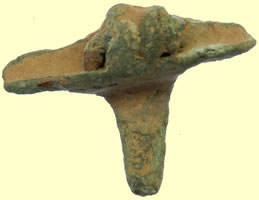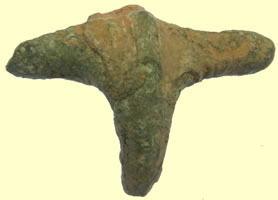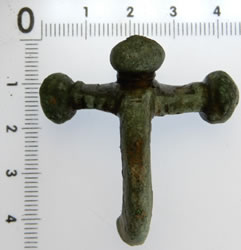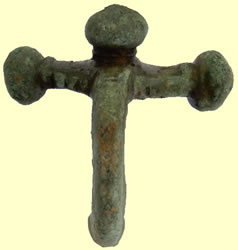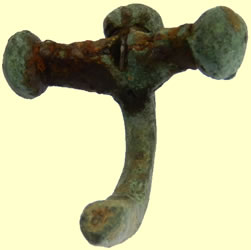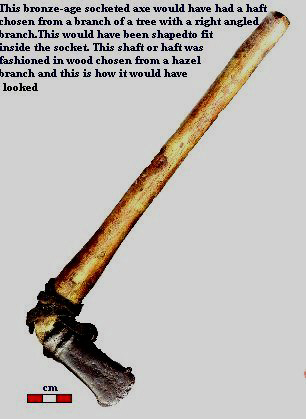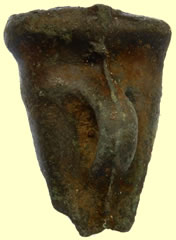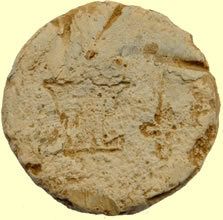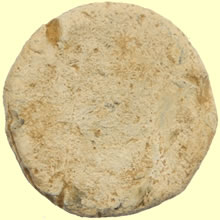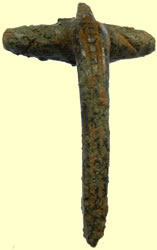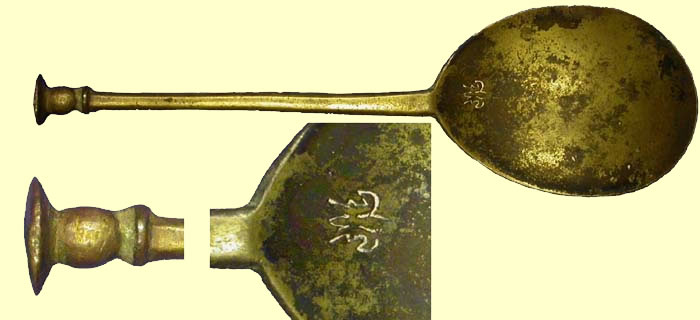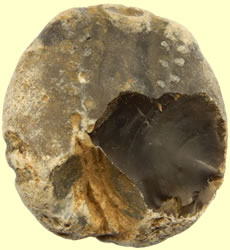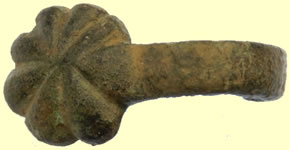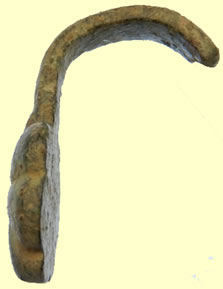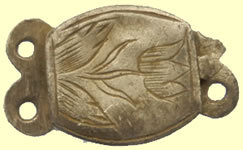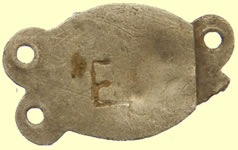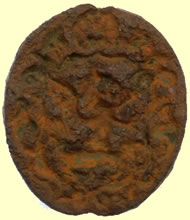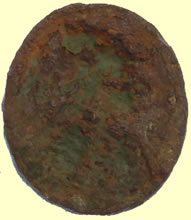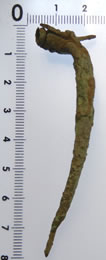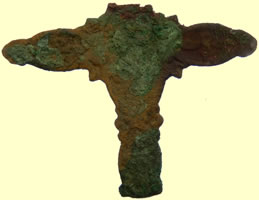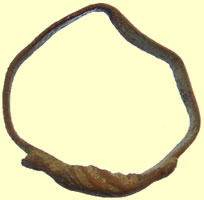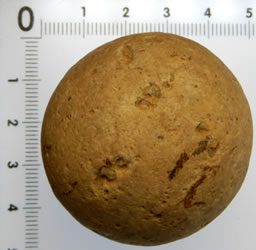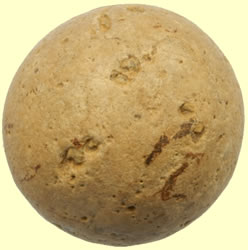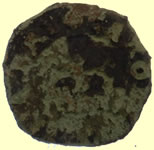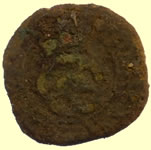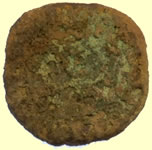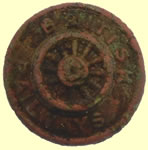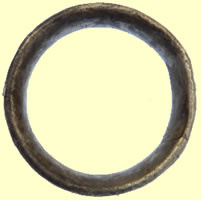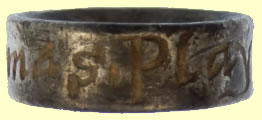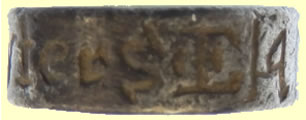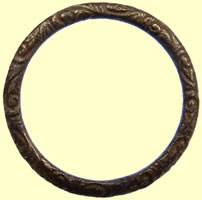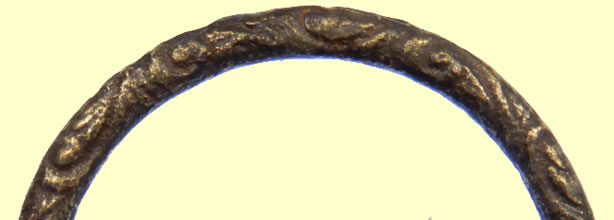

Metal detecting holidays in England with the World's most successful metal detecting club.
Twinned with Midwest Historical Research Society USA
2018 March Finds page |
Victorian gold collar stud 0.98g 'PATENT 19 CT' |
|||
25BC Eastern uninscribed Celtic gold qtr stater of Dubnovellaunos - reported as hoard addendum to museum 1.27g,11mm |
|||
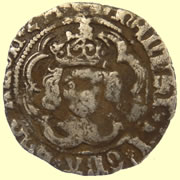  |
|||
1486-1500 Henry VII hammered silver half groat King and Archbishop Morton jointly - rosette stops Double arched crown - Class IIIb Obv HENRICVS DI GRA REX AGL Z A Rev CIVI/TAS/CAN/TOR - Canterbury mint
|
|||
45 BC to 25BC Addedomarus - Trinovantian tribe- reported as hoard addendum to museum 5.59g,18.55mm |
|||
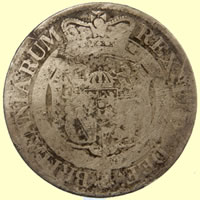

| 1818 George III milled silver half crown - 30 pence | ||||||||||||
1634-5 Charles 1st hammered silver shilling (12 pence) - mint mark P in brackets
|
||||||||||||
|
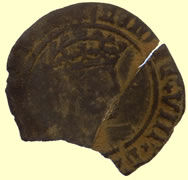 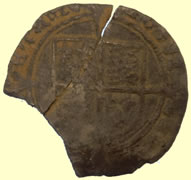 |
|||||||||||
| 1526-44 Henry VIII hammered silver groat - Arrow mint mark | 1526-44 Henry VIII hammered silver groat - Arrow mint mark | |||||||||||
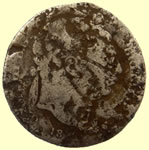 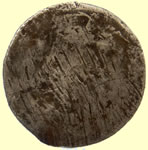 |
  |
|||||||||||
| 1820 George III milled silver sixpence | 1660's Charles II milled silver penny | |||||||||||
Unknown hammered silver coin fragment - researching it This is a cut fragment of an Abbasid dirham, common in Anglo-Scandinavian contexts of the late 9th to early 10th centuries. |
||||||||||||
 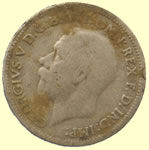 |
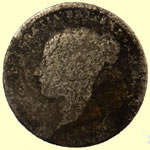 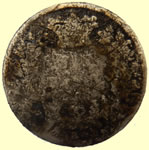 |
|||||||||||
| 1931 George V milled silver sixpence | 1862 Victoria milled silver sixpence | |||||||||||
| Georgian silver button | ||||||||||||
45 BC to 25BC Addedomarus - Trinovantian tribe- reported as hoard addendum to museum 5.45g,16.55mm |
||||||||||||
Smallest Celtic gold we have ever found Continental Iron Age Gallo-Belgic DC uninscribed gold quarter state This is a scarce variant of Gallo-Belgic D, the Face type, Scheers seies 14, my Gallo-Belgic Cd. On one side there's a very worn 'boat' design and on the other a large, kidney shaped blob, also very worn, that looks like an outline face on other coins. In 2003 I suggested they were struck by eastern neighbours of the Ambiani, perhaps by the Viromandui; there were 13 known at the time, perhaps 20-25 now including several from Britain, although I don't have the cards here. I'll give it a number later with the next batch if that's OK with you, All the best John 1.23g,8.82mm |
||||||||||||
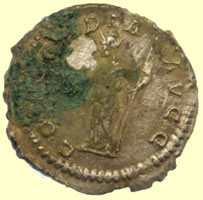 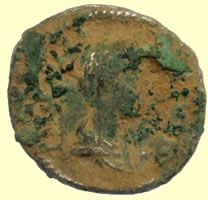 |
 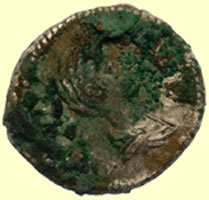 |
|||||||||||
Roman silver hoard coin - reported to museum and sent for ID 2.80g, 19.10mm Casey Hoard coin 15 – silver denarius |
Roman silver hoard coin - reported to museum and sent for ID 2.82g,14.65mm Sal4 Hoard coin 16 – probably a match for coin # 15, both have the same reverse type and the portrait clearly appears female here, so probably Plautilla, Caracalla’s wife 202-205 AD. |
|||||||||||
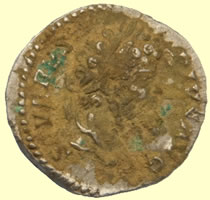 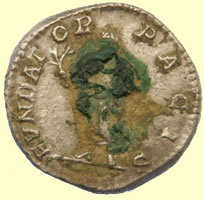 |
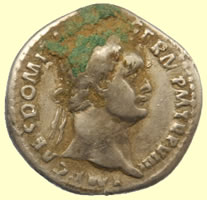  |
|||||||||||
Roman silver hoard coin - reported to museum and sent for ID 2.59g,18.02mm Sal2 Hoard coin 17 – Septimius Severus, 193-212 AD. |
Roman silver hoard coin - reported to museum and sent for ID 3.33g,19.23mm Sal 1 Hoard coin 18 – Domitian, 81-96 AD. |
|||||||||||
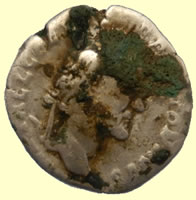 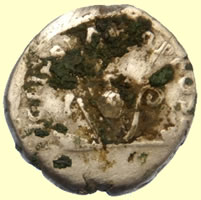 |
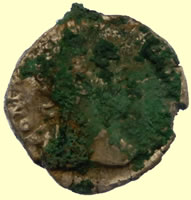 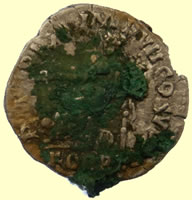 |
|||||||||||
Roman silver hoard coin - reported to museum and sent for ID 2.82g,14.65mm Sal3 Hoard coin 19 – Antoninus Pius, 139-161 [IMP T] AEL CAES [HA]DR ANTONINVS laureate head of Antninus Pius right |
Roman silver hoard coin - reported to museum and sent for ID 3.12g, 19mm Nick Hoard coin 20 – Commodus, 177-192 |
|||||||||||
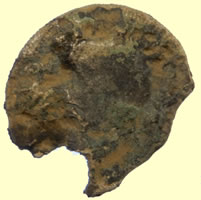 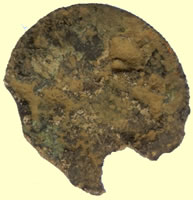 |
 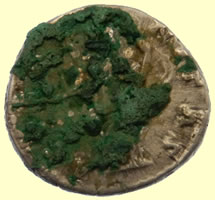 |
|||||||||||
Roman silver hoard coin - reported to museum and sent for ID 2.37g,19mm Nick1 Hoard coin 21 – Sorry, there are limits to what I can accurately ID from photos – re-orientation is conjectural at best – there simply isn’t enough here to distinguish this from any other badly chipped and heavily encrusted denarius, although given the rest of this hoard, the Severan era is most likely for a date (193-238 AD.) |
Roman silver hoard coin - reported to museum and sent for ID 2.55g,17mm Nick3 Hoard coin 22 – Posthumous commemorative issue by Antoninus Pius for his wife, Faustina Sr. (died ~ 140 AD) |
|||||||||||
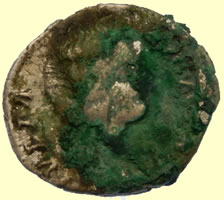 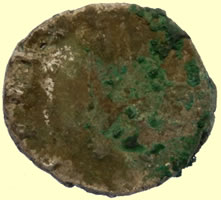 |
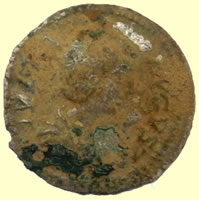 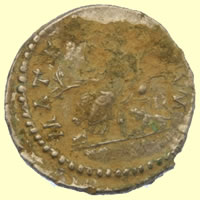 |
|||||||||||
Roman silver hoard coin - reported to museum and sent for ID 17mm,3,50mm Nick2 Hoard coin 23 – probably Julia Domna (195-217) wife of Septimius Severus – however there were quite a number of Julias who had denarii struck in their names during the Severan era |
Roman silver hoard coin - reported to museum and sent for ID 2.61g,18mm Fl Paul Hoard coin # 24 |
|||||||||||
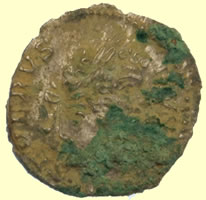  |
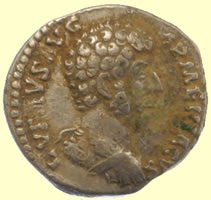 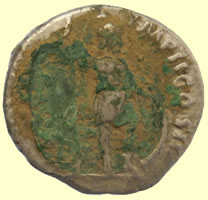 |
|||||||||||
Roman silver hoard coin - reported to museum and sent for ID 2.60g,19mm Buddy Hoard coin # 25 |
Roman silver hoard coin - reported to museum and sent for ID 3.05g,16mm Wendell Hoard coin # 26 |
|||||||||||
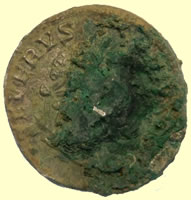 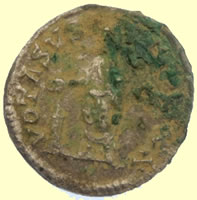 |
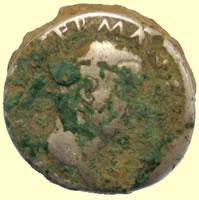 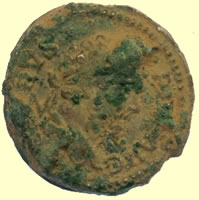 |
|||||||||||
Roman silver hoard coin - reported to museum and sent for ID 3.23g,17mm Bobby Hoard coin # 27 |
2 Roman silver hoard coin stuck together - reported to museum and sent for ID 6.50g,19mm Buddy Hoard coins # 28 & 29 |
|||||||||||
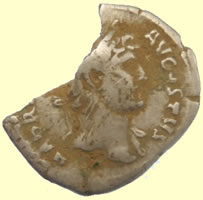 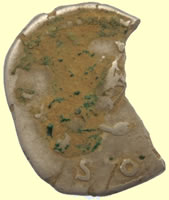 |
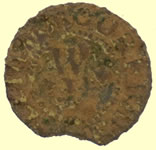  |
|||||||||||
Roman silver hoard coin - reported to museum and sent for ID 2.35g,20.0mm Ron Hoard Coin # 30 |
17thC hammered copper trade farthing | |||||||||||
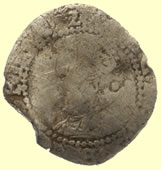  |
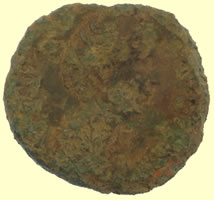  |
|||||||||||
| 1602 Elizabeth 1st hammered silver half groat - 2 mint mark | Large Roman bronze coin sent for ID Sestertius of Faustina I, posthumous issue by Antoninus Pius, ca. 147-161 AD |
|||||||||||
  |
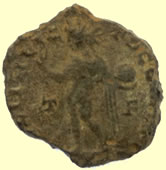 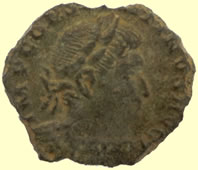 |
|||||||||||
| 1817 George III milled silver sixpence | 4thC Roman bronze coin sent for ID This is a follis by Constantine I (307-337) Mark Lehman |
|||||||||||
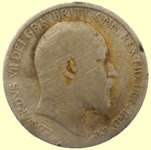  |
 |
|||||||||||
| 1902 Edward VII milled silver sixpence | Cameron Highlanders button ? | |||||||||||
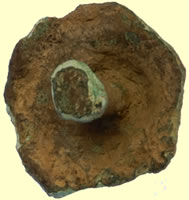  |
|
|||||||||||
| Roman bronze mount | Medieval buckle | |||||||||||
 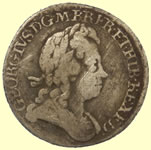 |
  |
|||||||||||
| 1720 George 1st milled silver sixpence | Tiny 1792 George III milled silver one pence | |||||||||||
  |
 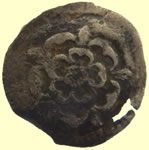 |
|||||||||||
| 1844 Victoria milled silver sixpence | 1619-20 James 1st hammered silver half penny - Spur rowel mint mark | |||||||||||
 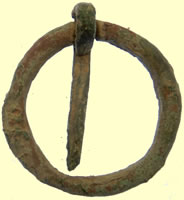 |
  |
|||||||||||
| Medieval annular brooch | Medieval mount | |||||||||||
158 -1189 AD Henry II hammered silver half penny ' Tealby' cross and crosslet type n 1158 a monetary reform was introduced in England which was of sufficient importance for the contemporary chroniclers to record that 'a new money was made, which was the sole currency of the kingdom.' This coinage is notorious for its ugly appearance, bad craftsmanship and careless execution. It continued till 1180, and is named after a large hoard which was found at Tealby, Lincolnshire, in 1807 Telby cut half (EMC 2018.0081) is class C-F , Canterbury mint, uncertain moneyer. Dr Martin Allen |
||||||||||||
  |
 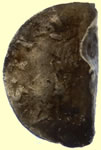 |
|||||||||||
| 1922 George V milled silver florin (24 pence) | 15th/16th Venetian hammered silver soldino Type 3 |
|||||||||||
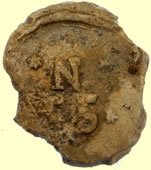 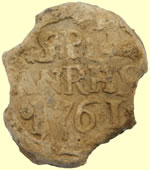 |
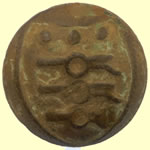 |
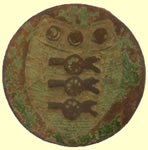 |
||||||||||
| Large early 1761 Russian lead bale seal - St Petersburg | 18thC Royal Artillery button | 18thC Royal Artillery button | ||||||||||
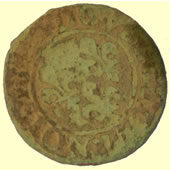  |
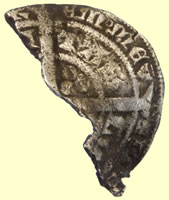 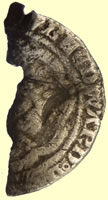 |
|||||||||||
Nuremberg reckoning counter circa 1415-1500 - small type Sigismund design - 3 Fleur de Lis in field:fictitious legend |
1327 Edward III hammered silver groat Obv +EDWARD o D *** Rev TAS/LO - London mint |
|||||||||||
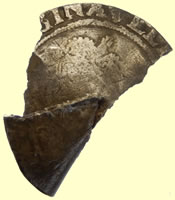 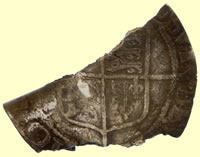 |
  |
|||||||||||
| 1560 -1 Elizabeth 1st hammered silver shilling Marlet mark | 1199- 1216 John hammered silver short cross half penny - Class 5 Obv h*** REX ** Rev ARNAV - Moneyer Arnavd |
|||||||||||
 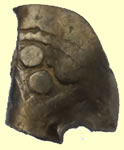 |
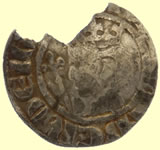 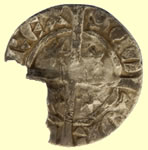 |
|||||||||||
| Medieval long cross half penny | 1280-1286 Alexander III Scottish hammered silver penny - 2nd coinage - Class 8 Stars have 7 points - 28 total in 4 quadrants Obv ALEXANDER DEI GRA Rev SCO/TOR/VM+/REX |
|||||||||||
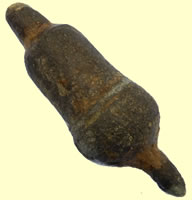 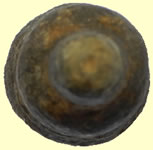 |
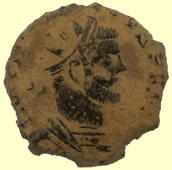 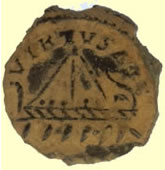 |
|||||||||||
| Roman bronze finial | Very interesting Roman bronze sent for ID Allectus, 293-296 AD. Æ "Quinarius" (Half-Antoninianus) |
|||||||||||
 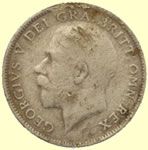 |
 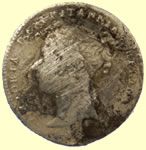 |
|||||||||||
| 1921 George V milled silver sixpence | 1842 Victoria milled silver four pence | |||||||||||
|
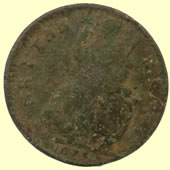 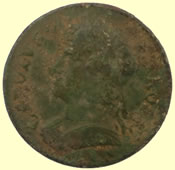 |
|||||||||||
| Victorian gold cuff link | Great condition 1675 Charles II milled copper half penny | |||||||||||
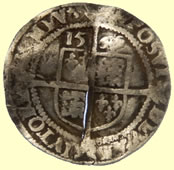 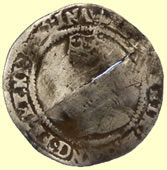 |
 |
|||||||||||
| 1567 Elizabeth 1st hammered silver half groat - Coronet mint mark | 20thC -The Salvation Army - over sixty club badge | |||||||||||
 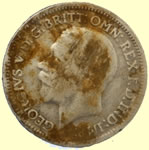 |
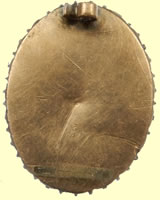 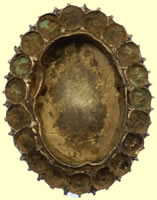 |
|||||||||||
| 1929 George V milled silver sixpence | Victorian gold brooch | |||||||||||
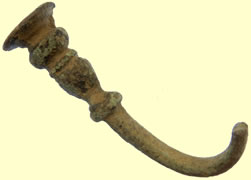 |
 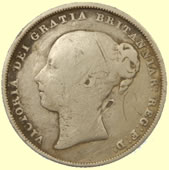 |
|||||||||||
| 16thC Tudor seal spoon handle | 1839 Victoria milled silver shilling | |||||||||||
 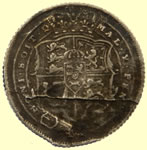 |
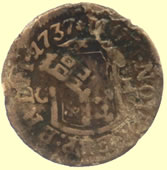 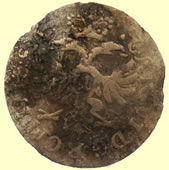 |
|||||||||||
| 1819 George III milled sliver sixpence | 1737 German States milled silver - 1 Groten (1/72) ObverseCity arms within shield. Date at end of surrounding legend. Lettering: MON:NOV:REIP:BREM:1737 ReverseLettering:
|
|||||||||||
 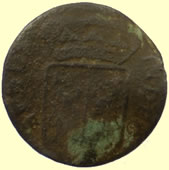 |
 |
 |
||||||||||
1740 Dutch milled copper coin Hollandia |
17thC lead token | 20thC Generic merchant navy button | ||||||||||
Roman silver hoard coin No 31 - reported to museum and sent for ID 2.77g,17mm This one required me to take a leap of faith to interpret the reverse – I can’t unconditionally guarantee this ID, so what may be found under the crud could be significantly different - I am working mainly on the basis of the 5 legible letters at the end of the legend and virtually nothing else. It is, (of course) Caracalla as a very young Augustus once again; coin is ca. 202 AD. That fits-in well with the dating of most of the other silver hoard coins which tend to be from the earlier Severan era. Those significantly older are as worn as one would expect some of them to be – as in the case of the Domitian denarii that are at least as a century earlier than the bulk of the denarii seen so far. Mark |
||||||||||||
Roman silver hoard coin No 32 - reported to museum and sent for ID 19mm,3.63g This one (# 32) wanted to give me a hard time. It wasn’t until I realized this was a fully encrusted silver denarius and not an Æ semis or quadrans that I was able to get a clue who we have here. As it turns out, it’s Domitian, again – dates to 89 AD. It raises questions (for me) as to its connection to the rest of the “hoard” find because although it would not be the earliest piece by any great margin, none of the others are anywhere nearly so profoundly dirt/sand encrusted. |
||||||||||||
70BC Morini Boat Tree type Celtic gold qtr stater - hoard addendum coin reported to museum 1.50g, 10.00mm |
||||||||||||
50 BC Celtic gold Gallic import qtr stater - new one for me - sent to PAS for recording Crossed lines with rider ABC 37, VA 37 Classed as scare 1.86g, 10.15mm Caletes tribe, Normandy coast |
||||||||||||
1526-44 Henry VIII hammered silver groat - Sunburst mint mark |
||||||||||||
Great eyeball find - 450 million year old fossil in flint |
||||||||||||
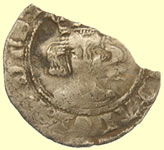 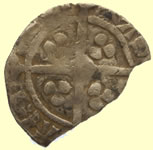 |
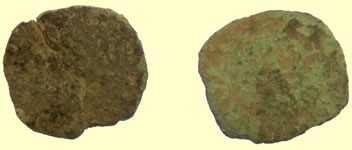 |
|||||||||||
Irish 1470-73 Edward IV hammered silver penny - double annulet stops - quadrefoil at centre of reverse cross - Unknown legend Obv **D o ANGL o R* DNS o h ** Rev CIVI/TAS ***/AGIE - Cork mint |
1634 Charles 1st hammered copper rose farthing | |||||||||||
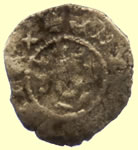  |
 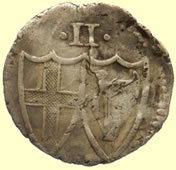 |
|||||||||||
1300-10 Edward II hammered silver farthing- new issue with inner circles both sides - oval flan - chubby cheeks - Type 28 Obv + EDWARDVS REX Rev CIVI/TAS/LON/DON - London mint |
1649 Commonwealth hammered silver half groat | |||||||||||
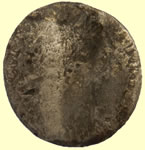 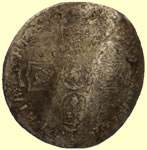 |
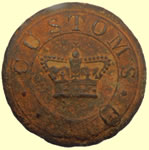 |
|||||||||||
| 17thC William milled silver sixpence love token | 19thC Customs button | 19thC livery button | ||||||||||
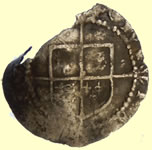 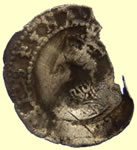 |
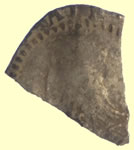 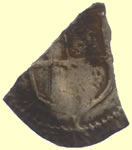 |
|||||||||||
| 16thC Elizabeth 1st hammered silver penny | 16thC Elizabeth 1st hammered silver penny fragment | |||||||||||
Roman bronze dice - opposite faces do not add up to 7 |
||||||||||||
19thC 7th Regiment of foot button BHURTPORE.LASWAREE The Battle of Laswari took place on November 1, 1803 near Laswari village, Alwar.It was part of the Second Anglo-Maratha War. The Siege of Bharatpore was a siege that took place in the Indian princely state of Bharatpur (now part of Rajasthan) between December 1825 and January 1826. British troops under Lord Combermere initially surrounded the state's capital until on 18 January 1826 its fortress was stormed and captured.
|
||||||||||||
 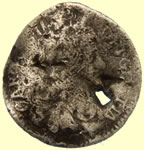 |
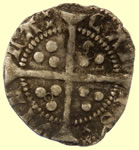 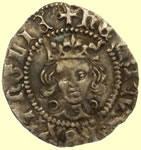 |
|||||||||||
| 1670 Charles II milled silver two pence | 1422-27 Henry VI First reign hammered silver penny Annulets by neck, annulets in centre of pellets in 2 qtrs Rev VILLA/CAL/ISIE - Calais mint |
|||||||||||
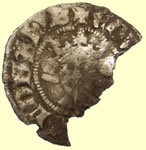 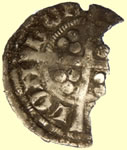 |
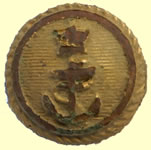 |
|||||||||||
1279 Edward 1st hammered silver long cross penny Obv +EDW*****DNS hYB Rev CIVI/TAS/LON/DON - London mint |
Royal Navy - Officers (Roped Rim) Lined Background 17.5mm - 1843-1891 | Georgian button | ||||||||||
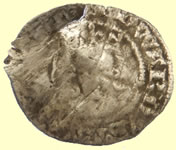  |
 |
|||||||||||
1351- 61 Edward III hammered silver penny - pre treaty Durham - one annulet on each shoulder Obv EDWARDVS ***** Rev TAS/DVNE/L ** - Durham mint |
1921 half crown and shilling comparison | |||||||||||
 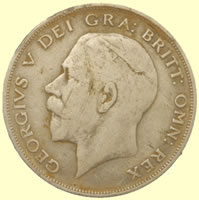 |
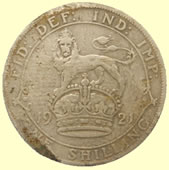 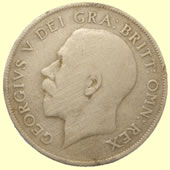 |
|||||||||||
| 1921 George V milled silver half crown (30 pence) | 1921 George V milled silver shilling (12 pence) | |||||||||||
 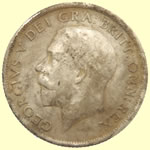 |
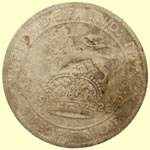  |
|||||||||||
| 1912 George V milled silver sixpence | 1922 George V milled silver sixpence | |||||||||||
 |
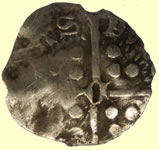 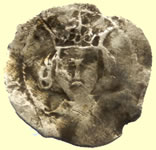 |
|||||||||||
| 20thC enameled badge | 1471- 83 Edward IV hammered silver long cross penny - D at centre of reverse cross Rev TAS/DV = Durham mint |
|||||||||||
 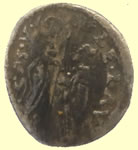 |
 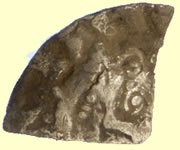 |
|||||||||||
1501-1521Leonardo Lauredan, Doge Rev: LAVS TIBI SOLI (Thee Alone be Praised). Haloed figure of Christ holding a cross. Obv: LE LAV DVX S M V (Leonardo Lauredan, Doge. St Mark of Venice.) Doge kneeling before Saint Mark. |
1247 Henry III hammered silver voided long cross farthing | |||||||||||
 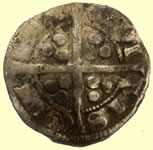 |
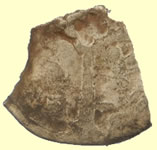 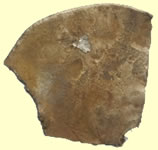 |
|||||||||||
1279 Edward 1st hammered silver long cross penny Obv + EDWAR****NS hYB Rev CIVI/TAS/LOND88 London mint |
Medieval hammered silver long cross penny - quadrefoil with pellet at centre of reverse cross - York mint | |||||||||||
Needs more research - hanging pendant ? |
||||||||||||
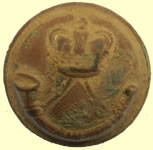 |
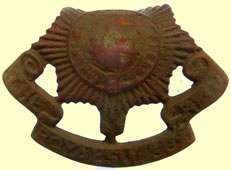 |
|||||||||||
| Victorian Durham Light Infantry button | 16thC Tudor button | WWI Royal Sussex regiment cap badge | ||||||||||
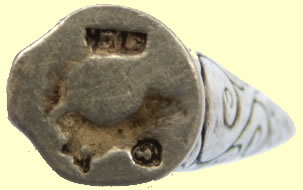 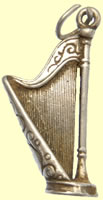 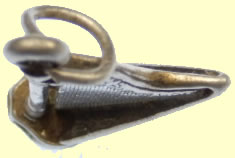 |
||||||||||||
| Victorian silver pendant - Victoria duty paid impression | ||||||||||||
 |
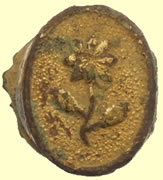 |
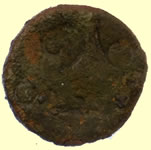 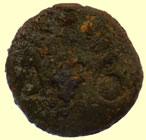 |
||||||||||
| Georgian bell trade weight | Edwardian gilded clasp | 1770's - 4 shillings and 6 pence coin weight | ||||||||||
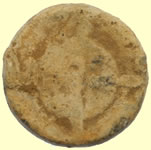 |
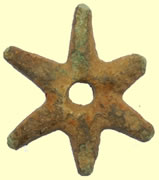 |
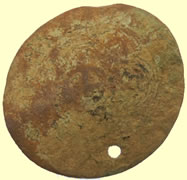 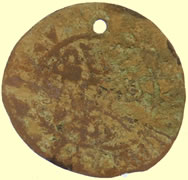 |
||||||||||
| Medieval lead token | Medieval spur rowel | 1586 Hans Krauwincel II Rose orb Jeton HANNS KRAVWINCKEL IN NVRENB |
||||||||||
16thC Tudor gold ring top - reported as treasure to museum 12mm L, 1.58g |
||||||||||||
Primary Saxon silver sceat 600- 700 AD - sent to Fitzwilliam museum for recording and ID 0.84g, 11.00 mm The sceat (EMC 2018.0080) is Series BIa Dr Martin Allen |
||||||||||||
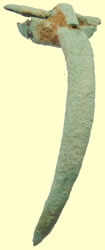 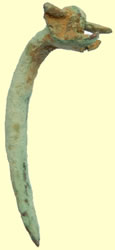 |
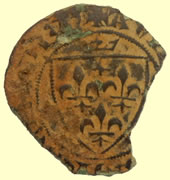  |
|||||||||||
| Huge 2ndC Roman fibular brooch | 14thC 'Shield of France' Jetton Obv X AVE MARIA o GRACIA Obv Shield of France bearing three feur de lis |
|||||||||||
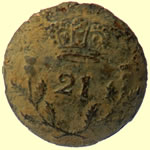 |
 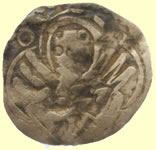 |
|||||||||||
21st Regiment of Foot button Officer - 1782-1855 The Royal North British Fusiliers until 1751, when the regiment was assigned the number |
15th/16th Venetian hammered silver soldino Type 3 |
|||||||||||
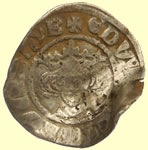 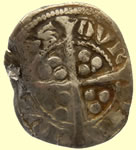 |
 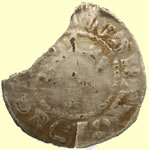 |
|||||||||||
1279 Edward 1st hammered silver long cross penny Obv + EDW**GL DNS hYB Rev CIVI/TAS/DVR - Durham mint |
1279 Edward 1st hammered silver long cross penny Obv + EDWAR ANGL DN **** Rev CIVI/TAS/DVR/EME - Durham mint |
|||||||||||
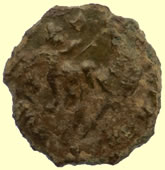 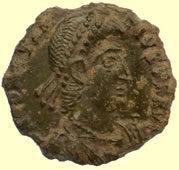 |
||||||||||||
4thC Roman bronze coin - sent for ID This is one of the 2 or 3 coin-types likely to be tied for “most common Roman coin”. It’s Constantius II, 337-361 AD. and it’s the “fallen horseman Fel Temp” reverse on a reduced majorina – like this:
|
||||||||||||
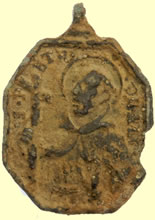 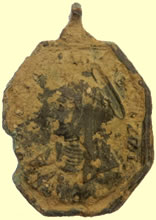 |
 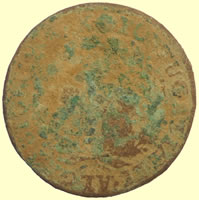 |
|||||||||||
| circa 1730 religious medallion | 1700's Portuguese 10 Reis, X; 1/2 Vinten
|
|||||||||||
 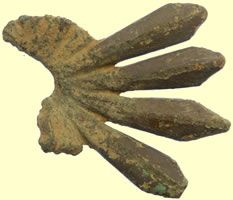 |
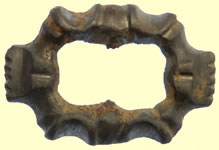 |
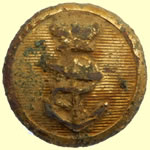 |
||||||||||
| Medieval spur rowel | Georgian shoe buckle |
|
||||||||||
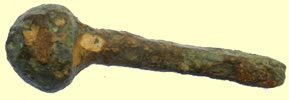 |
 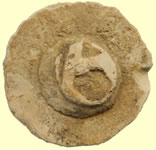 |
|||||||||||
| Roman pin | Post medieval lead cloth seal | |||||||||||
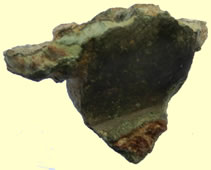 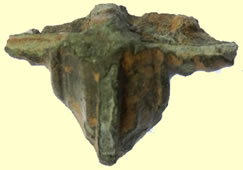 |
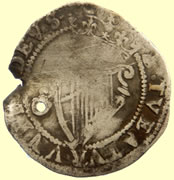 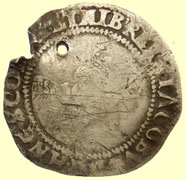 |
|||||||||||
| 2ndC Roman fibular brooch | Irish 1603- 1604 James 1st hammered silver six pence - 1st issue Obv JACOBUS D.G.ANG SCO FRA HIB REX |
|||||||||||
 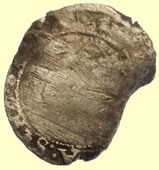 |
  |
|||||||||||
| 1572 Elizabeth 1st hammered silver half groat | Medieval long cross half penny | |||||||||||
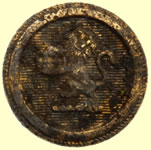 |
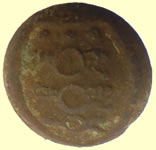 |
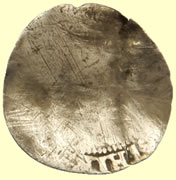 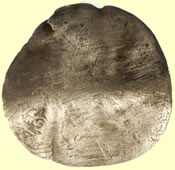 |
||||||||||
| 19thC East India Company button | 18thC Royal Artillery button | Post medieval hammered silver groat/sixpence Obv ST HIB |
||||||||||
 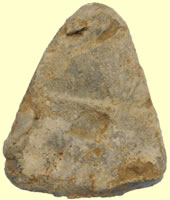 |
||||||||||||
Medieval lead heraldic shield type trade weight 1.7oz, 35mm |
||||||||||||
Amazing repair by our goldsmith - I had to double check the legend to make sure it was the same ring. 17thC gold memorial ring disclaimed by the British Museum |
||||||||||||
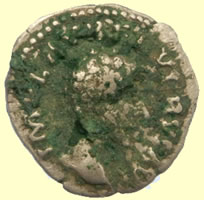 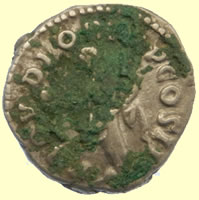 |
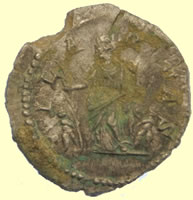 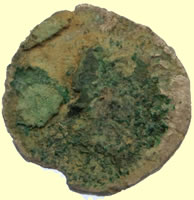 |
|||||||||||
Roman silver hoard coin 33- reported to museum and sent for ID 17mm,3.22g |
Roman silver hoard coin 34 - reported to museum and sent for ID 3.00g, 20.0mm |
|||||||||||
Hoard coin # 33: Hoard coin 34: |
||||||||||||
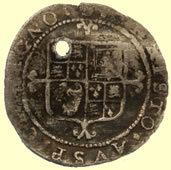 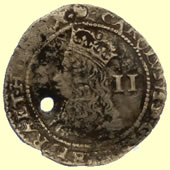 |
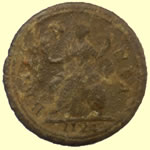 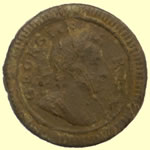 |
|||||||||||
1660-2 Charles II hammered silver half groat - Crown mint mark Third issue - inner circles both sides |
1724 George 1st milled copper 'dump' issue farthing | |||||||||||
  |
 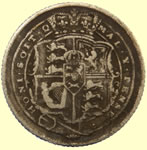 |
|||||||||||
| 1800 George III milled silver three pence | 1817 George III milled silver six pence | |||||||||||
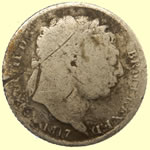  |
 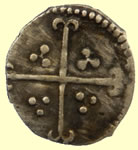 |
|||||||||||
| 1817 George III milled silver six pence | 1590-2 Elizabeth 1st hammered silver half penny - Hand mint mark | |||||||||||
  |
 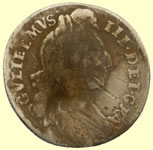 |
|||||||||||
| Tiny 1625 Charles 1st hammered silver half penny - rose both sides, no legend type | 1696 William III milled silver sixpence | |||||||||||
1808 French Napoleon - 1 milled silver Demi Franc Reverse : Denomination within wreath, date below EMPIRE FRANÇAIS. 1 FRANC. ancre 1808. Metal: Silver (.900). Obverse : Laureate head right NAPOLEON EMPEREUR. Denomination: 1 Franc. Country: France. |
||||||||||||
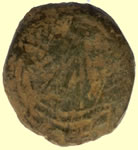  |
 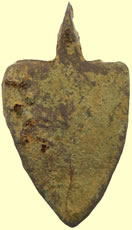 |
|||||||||||
| 15th/16thC British Gold Nobel coin weight - Ship type | 14thC Heraldic medieval shield pendant - rampant Lion with enameled inlay I would describe this shield as: " Per Pale or and vert overall a lion rampant gules". Cal Jim
|
|||||||||||
1199-1216 John hammered silver short cross penny -class 5a2-Cross pommee in reverse inscription Obv HENRICVS REX Rev + RICARD T ON LVN - Moneyer Ricard T of London mint |
||||||||||||
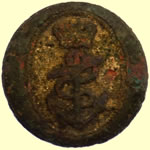 |
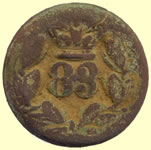 |
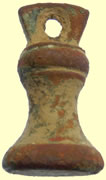  |
||||||||||
| RN Capt / Commander - 1812 RN Lieutenant - 1812 RN Midshipman - 1812 RN Volunteer Gr.I - 1812 After this issue a Midshipman will have the Captain's style |
O/R's - 1855-1881 THE 83rd REGIMENT OF FOOT 83rd (County of Dublin)
|
Georgian bell type trade weight | ||||||||||
Saxon hammered silver penny Sent off to the Fitzwilliam museum for recording and ID confirmation 1016 AD Cnut's Short Cross type, probably from York, with a mint signature that might be read as [ ]RPI.
|
||||||||||||
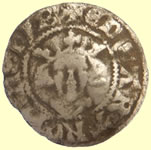 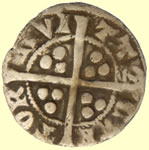 |
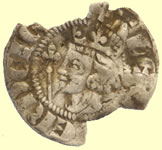 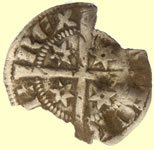 |
|||||||||||
1279 Edward hammered silver long cross penny Obv+EDWAR ANGL DNS hYB Rev CIVI/TAS/CAN/TOR - Canterbury mint |
Scotland Alexander 1249-1286 hammered silver penny Class 4 obv - ALEXANDER DEI GRA Rev -REX SCOTORUM - King of Scotland |
|||||||||||
  |
 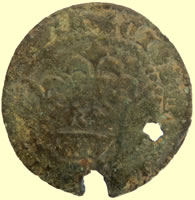 |
|||||||||||
| 1247 Henry III hammered silver voided long cross half penny | 1340 AD French Jetton Crown introduced in 1340 by Philip VI (1328-50) Royal Crown with 3 rosettes across body of crown |
|||||||||||
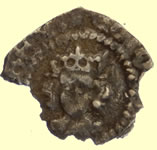 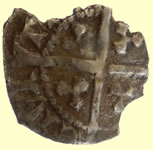 |
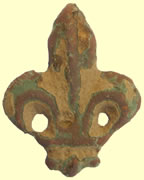 |
|||||||||||
1327 Edward III hammered silver half penny Obv EDW *** REX Rev CIVI/TAS/*** |
Medieval fleur de lis mount | 16thC Tudor fretwork button | ||||||||||
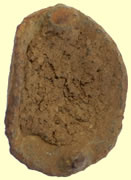 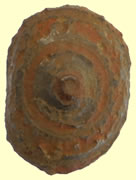 |
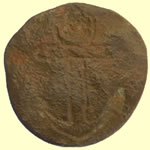 |
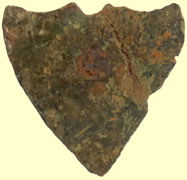 |
||||||||||
| 2nd to 3rdC Roman plate brooch- gilded glass centre-boss type | Capt / Commander - 1774-1787 | 1500-1700 mount | ||||||||||
  |
 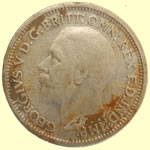 |
|||||||||||
| Victorian decorated silver anchor brooch | 1929 George V milled silver sixpence | |||||||||||
  |
  |
|||||||||||
| Medieval key handle ? | 16thC Elizabeth 1st hammered silver half groat | |||||||||||
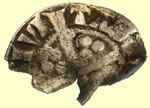 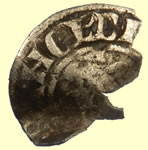 |
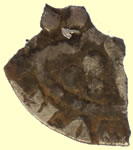 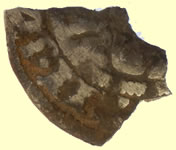 |
|||||||||||
Medieval hammered silver long cross penny Obv **ANGL DNS **** Rev CIVI/TAS |
Medieval hammered silver long cross penny fragment Rev /DVR/ - Durham mint |
|||||||||||
 |
 |
 |
||||||||||
| Medieval mount | Georgian silver cuff link | Air League of the British Empire RAF lapel Badge. Founded in 1909 originally as The Aerial League of The British Empire, The Air League was formed to counter ‘the backwardness and apathy’ shown by the UK in the face of emerging aeronautical developments and to stress the ‘vital importance from a commercial and national defence point of view of this new means of communication’. The founders of the Air League were concerned that Britain was falling behind other nations in the development of its aviation capability. |
||||||||||
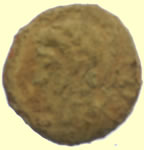 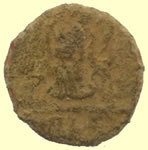 |
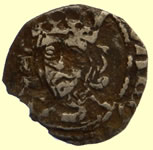  |
|||||||||||
| Tiny 4thC Roman bronze coin - I need to take better pictures and send them of to our Roman expert | Foreign looking hammered silver penny - researching it Reverse has quadrefoil at centre of reverse cross |
|||||||||||
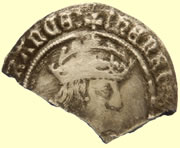  |
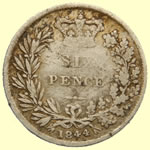 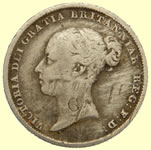 |
|||||||||||
| 1526-44 Henry VIII hammered silver groat - Arrow mint mark | 1844 Victoria milled silver sixpence | |||||||||||
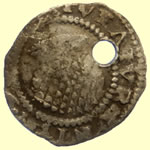 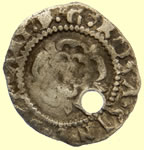 |
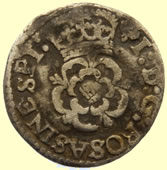 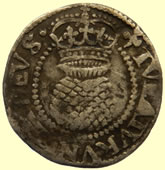 |
|||||||||||
| 1618-19 James 1st hammered silver penny - Plain cross mint mark | 1612-13 James 1st hammered silver half groat - Trefoil mint mark | |||||||||||
 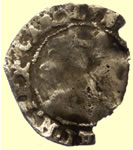 |
||||||||||||
| 1624 Charles 1st hammered silver penny | 17thC Charles II silver button - reported as treasure to museum | |||||||||||
  |
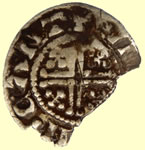 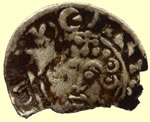 |
|||||||||||
| Medieval hammered silver long cross half penny | 1216 Henry III hammered silver short cros penny Rev N.CANT+ Canterbury mint |
|||||||||||
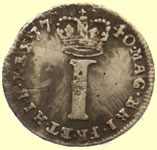  |
 |
|||||||||||
| 1740 George II milled silver penny | Georgian watch winders | |||||||||||
 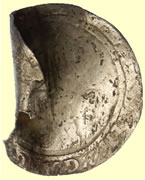 |
 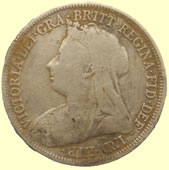 |
|||||||||||
| 1583 Elizabeth 1st hammered silver sixpence | 1900 Victoria milled silver shilling (12 pence) | |||||||||||
 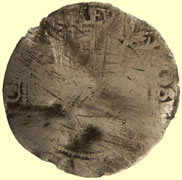 |
|
|||||||||||
| 1561-5 Elizabeth 1st hammered silver sixpence - Pheon mint mark | Silver whistle - 110mm long London hall mark 1920 date Maker MORDANT |
|||||||||||
 |
||||||||||||
| Georgian silver button | 18thC crotal bell | |||||||||||
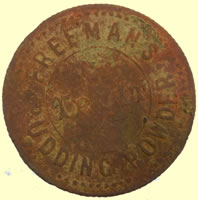  |
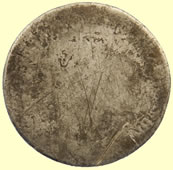 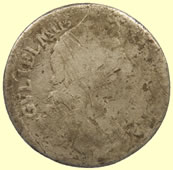 |
|||||||||||
1883 Freeman's pudding powder Try it ! token Freeman's Baking Powder advertising token Prince of Wales Award. Obverse: Portrait of The Prince of Wales [later King Edward VII] |
1696 William III milled silver shilling | |||||||||||
 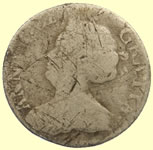 |
 |
|||||||||||
| 1711 Anne milled silver sixpence | 17thC lead token | 16thC Tudor button | ||||||||||
 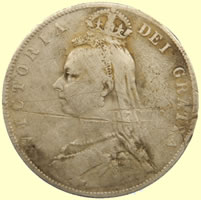 |
 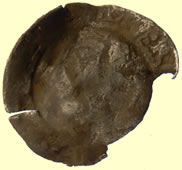 |
|||||||||||
| 1890 Victoria milled silver half crown (30 pence) | 1571 Elizabeth 1st hammered silver half groat | |||||||||||
Biggest medieval seal matrix I have seen dug The big impression looks the most promising for a reading. Pretty sure it begins with the usual s' for 'sigillum' then I think I see Icha which made me wonder whether this might be a Richard -- but that definitely looks like the expected 's' before it and there seems to be no trace of an R. The next few letters look irrecoverable but the 2nd name/surname may end in els Sorry -- can't win em all! Malcolm
|
||||||||||||
|
 |
|||||||||||
| 1902 - Silver band - Birmingham hall mark - date letter C | Lead toy horse | |||||||||||
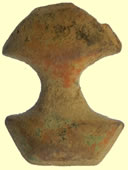 |
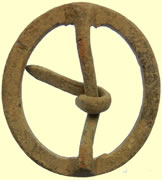 |
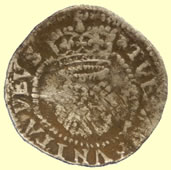 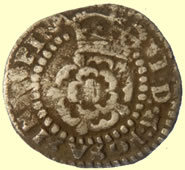 |
||||||||||
| 1500-1700 mount | 17thC baldric buckle | 1603-4 James 1st hammered silver half groat - Thistle mint mark | ||||||||||
850Bc Bronze Age socketed axe head |
||||||||||||
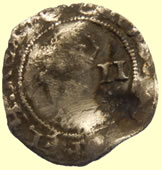  |
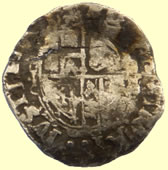 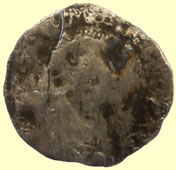 |
|||||||||||
| 1645 Charles 1st hammered silver half groat - eye mint mark | 1624 Charles 1st hammered silver half groat | |||||||||||
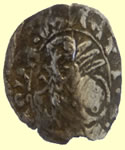 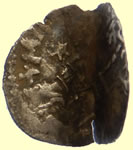 |
  |
|||||||||||
15thC Venetian hammered silver soldino Type 1 |
1247 Henry III hammered silver voided long cross half penny | |||||||||||
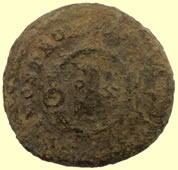  |
||||||||||||
Interesting Roman bronze coin sent for ID This is a Constantinian-era billon centenionalis. Given the condition here, it’s only possible to tell who’s on it by checking both the obverse and reverse legends. This one is Constantine II, Caesar. So you lucked out with this one – had we not had these specific parts of the legends we would not have been able to tell which of several Caesars it might be (Crispus and Licinius II both had similar types) and even whether it was a Caesar as opposed to one of the two AVGVSTII (who each had their own concentric reverse legends) as well. Unfortunately the exergual mint mark is completely illegible due to encrustation. It might be possible after some judicious cleaning to tell which mint produced it. These legend-and-Vota centenionales were struck at all of the Imperial mints at this time. Mark |
||||||||||||
|
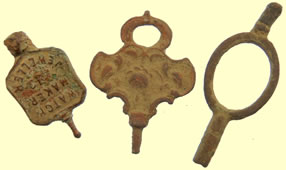 |
|||||||||||
| Georgian pipe tamper | Georgian watch winders | |||||||||||
|
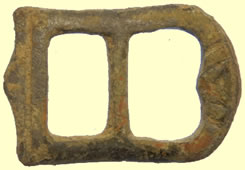 |
|||||||||||
| Undiagnostic silver finger ring | A complete cast copper alloy buckle of post-medieval date. The buckle is a double loop asymmetrical shape Circa 1575- 1700 |
|||||||||||
Georgian fob seal matrix |
||||||||||||
Medieval seal matrix - needs cleaning to reveal impression |
||||||||||||
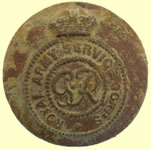 |
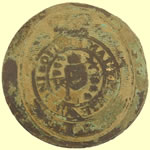 |
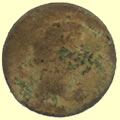 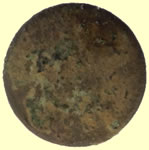 |
||||||||||
| WWII Royal Army Service Corp button | One piece Navy button HONI SOIT QUI MAN Y PENSE PACKET Honi soit qui mal y pense (Old French: shame upon him who thinks evil of it) RN - Packet Service c.1800-1811 |
One of the smallest coin/tokens you can find . 1848 Victoria 'Model Eight farthing' 0.29g, 8.4mm | ||||||||||
 |
 |
|||||||||||
| WWII Royal Air force buttons | 17thC mount | |||||||||||
Big extra thick Roman bronze coin sent for ID 27mm dia, 4mm T, 15.77g |
||||||||||||
 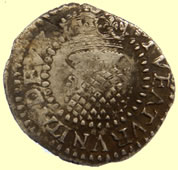 |
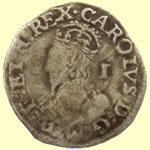 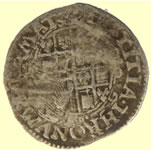 |
|||||||||||
| 1623-4 James 1st hammered silver half groat - Lis mint mark | 1634-5 Charles 1st hammered silver penny - 2 dot mint mark | |||||||||||
 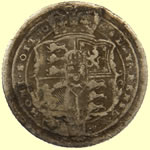 |
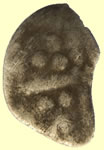  |
|||||||||||
| 1816 George III milled silver sixpence | Medieval hammered silver long cross penny fragment | |||||||||||
 |
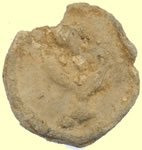 |
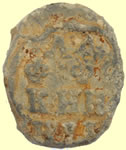 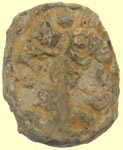 |
||||||||||
| 17thC lead token | 17thC lead token | Post medieval lead Russian bale seal | ||||||||||
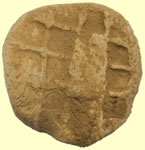 |
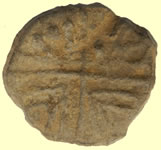 |
 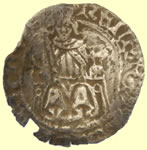 |
||||||||||
| 17thC lead token | 15thC lead token | 1485 Henry VII hammered silver sovereign penny - Keys by shield - Archbishop Rotherham - no pillars to throne York mint |
||||||||||
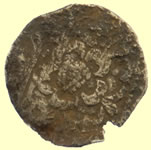 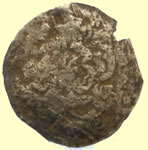 |
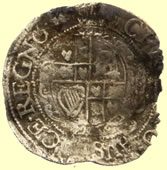 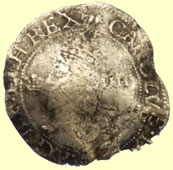 |
|||||||||||
| Tiny 1625 Charles 1st hammered silver half penny - rose both sides, no legend type | 1638/9 Charles 1st hammered silver groat - shield plume Aberystwyth mint - Wales
|
|||||||||||
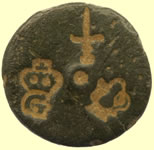 |
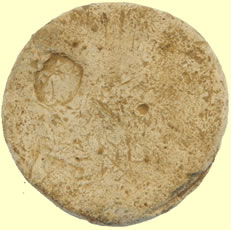 |
 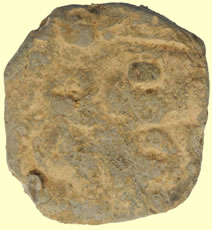 |
||||||||||
| George 1st trade weight - London mark | Huge 50mm 17thC diameter trade weight- obscured plummer mark | Huge 38mm wide medieval lead trade weight Interesting obverse |
||||||||||
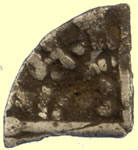 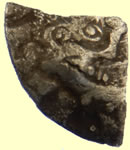 |
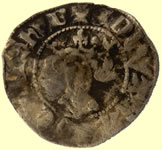 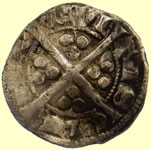 |
|||||||||||
| 1247 Henry III hammered silver voided long cross farthing | 1279 Edward 1st hammered silver long cross penny Obv +EDWAR ANGL DNS hYB Rev CIVIT/TAS ??? |
|||||||||||
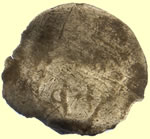 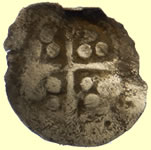 |
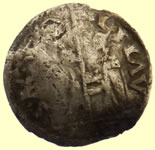 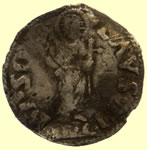 |
|||||||||||
| Medieval hammered silver long cross penny | 1501-1521 Leonardo Lauredan, Doge Rev: LAVS TIBI SOLI (Thee Alone be Praised). Haloed figure of Christ holding a cross. Obv: LE LAV DVX S M V (Leonardo Lauredan, Doge. St Mark of Venice.) Doge kneeling before Saint Mark. |
|||||||||||
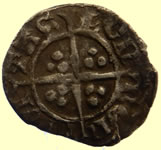 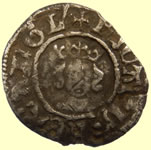 |
  |
|||||||||||
1377-1399 Richard II hammered silver half penny Obv + RICARD. REX ANGL' Rev CIVI/TAS/LON/DON- London mint |
Alexander II 1214-49 Scottish hammered silver voided long cross half penny Obv ALEXANDER REX Rev HAN/ON/ - Moneyer Wilam Iohan of uncertain mint |
|||||||||||
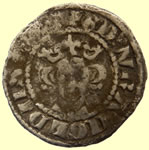 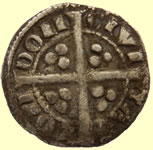 |
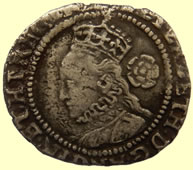 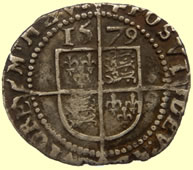 |
|||||||||||
1299 -1300 Edward 1st hammered silver long cross penny - Class 9b- Pot hook N Obv +EDWR ANGL DNS hYB Rev CIVIT/TAS/LON/DON - London mint |
1579 Elizabeth 1st hammered silver half groat - Greek cross mint mark | |||||||||||
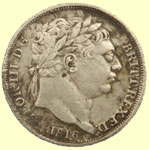 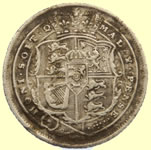 |
 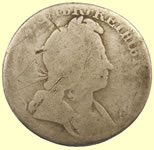 |
|||||||||||
| 18116 George III milled silver sixpence | 1723 George 1st milled silver sixpence | |||||||||||
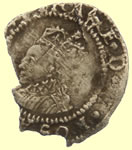 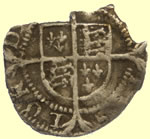 |
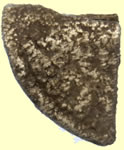 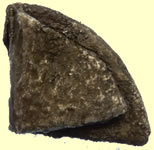 |
|||||||||||
| 1573-8 Elizabeth 1st hammered silver penny - Martlet mint mark | 1247 Henry III hammered silver voided long cross half penny | |||||||||||
 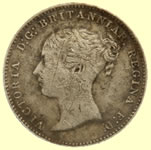 |
 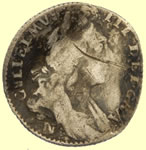 |
|||||||||||
| 1868 Victoria milled silver three pence | 1697 William III milled silver sixpence - love token - Norwich mint | |||||||||||
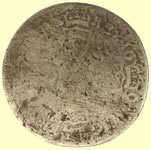 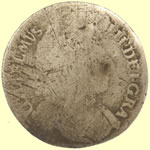 |
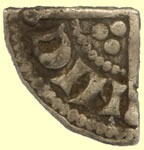 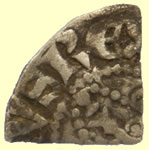 |
|||||||||||
| 1697 William III milled silver sixpence | 1247 Henry III hammered silver voided long cross farthing Obv /NIC/ - Moneyer Nicole |
|||||||||||
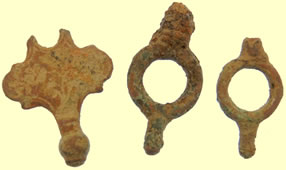 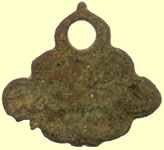 |
 |
|||||||||||
| Georgian watch winders | 1500-1700 harness mount | 19thC hunting button | ||||||||||
 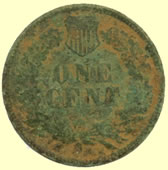 |
 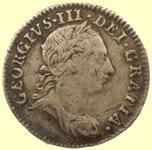 |
|||||||||||
| 1882 USA Indian head milled copper one cent | 1762 George III milled silver three pence | |||||||||||
 |
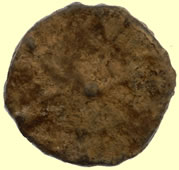 |
 |
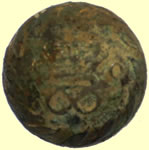 |
|||||||||
| 15thC lead token | 15thC lead token | Unknown shipping line button | 1881 The Royal Staffordshire Reg | |||||||||
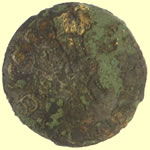 |
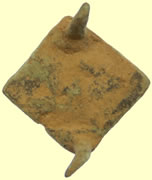 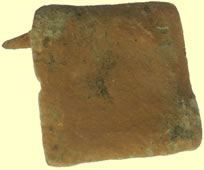 |
|||||||||||
| c1770-1785.Prince of Wales 3rd Dragoon Guards PoW feathers with D Gds either side and ICH DIEN below. |
19thC livery button | 1500-1700 mount | ||||||||||
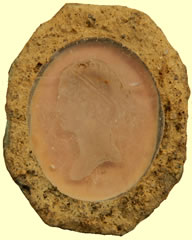 |
  |
|||||||||||
| Georgian intaglio | 1649 Commonwealth hammered silver penny | |||||||||||
  |
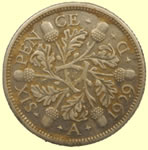  |
|||||||||||
1247 Henry III hammered silver voided long cross half penny Obv hENRICVS Rev LEM/ONC - Moneyer Willem of Canterbury mint |
1929 George V milled silver sixpence | |||||||||||
 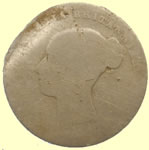 |
  |
|||||||||||
| 1843 Victoria milled silver sixpence | 1485 Henry VII hammered silver sovereign penny - Archbishop Rotherham - no pillars to throne | |||||||||||
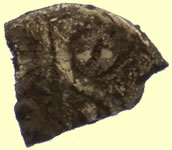 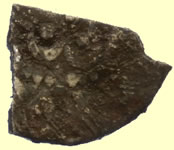 |
  |
|||||||||||
| 1247 Henry III hammered silver voided long cross farthing | 1624 Charles 1st hammered silver half groat | |||||||||||
 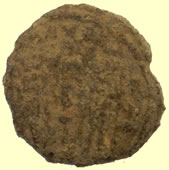 |
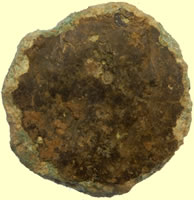 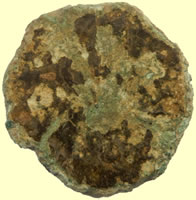 |
|||||||||||
| Mid 4thC House of Constantine Roman bronze coin - two soldiers standing type | 2ndC Roman bronze coin | |||||||||||
1663 Charles II hammered silver shilling (12 pence) |
||||||||||||
Circa 13thC Medieval lead seal matrix + S'IOhA (short for S[igillum] Iohannis)
|
||||||||||||
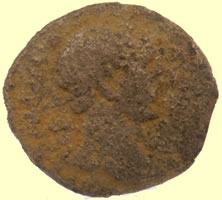  |
||||||||||||
2ndC Roman silver coin - needs cooking to remove crust Although I really need the diameter to be 100% certain with as little legend as is legible on this one (although I’m pretty certain it’s from the mint of Thessalonica) I feel sure enough to say I think it’s a SPES REIPVBLICE reduced majorina of Constantius II. After the end of the “fallen horseman” reduced majorinae, ca. 355, these skimpy and typically crudely struck and undersized majorinae were struck by both Constantius II and by Julian, as Caesar. They are the last gasp of the original generation of the majorina denomination which was introduced as an Æ2 (much larger) in 348, immediately before the reforms of Julian II restored a Constantinian-sized centenionalis with a Vota reverse.
Constantius II, 337-361 A.D. Æ3/4 reduced bronze majorina |
||||||||||||
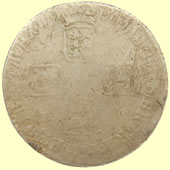 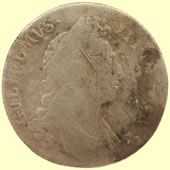 |
 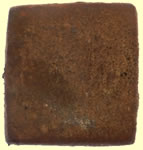 |
|||||||||||
| 1696 William III milled silver shilling | 15thC Angel coin weight | |||||||||||
 |
 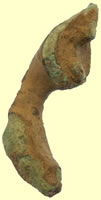 |
|||||||||||
One piece Navy button HONI SOIT QUI MAN Y PENSE PACKET Honi soit qui mal y pense (Old French: shame upon him who thinks evil of it) RN - Packet Service c.1800-1811 |
2ndC Roman fibular brooch - trumpet type | |||||||||||
2ndC Roman fibular brooch - head stud type |
||||||||||||
 |
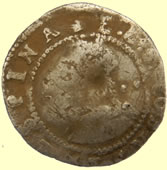 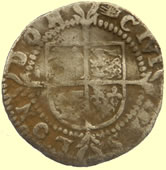 |
|||||||||||
| Medieval lead spindle whorl | 1590-2 Elizabeth 1st hammered silver half groat - hand mint mark | |||||||||||
  |
 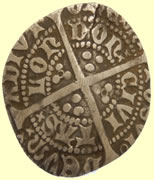 |
|||||||||||
1247 Henry III hammered silver voided long cross half penny Rev VND/WIL - Moneyer Willem of London mint |
1422- 30 Henry VI hammered silver half groat - Annulet Issue London IM Cross I 11 arches to tressure- single punch fleurs on cusps, none over crown Double satire stops, extra annulets in opposing two qtr's on reverse, New letter n - Annulet after POSVI on reverse. Obv + hENRICx DIx GRAx REXx ANGLx Z F Rev CIVIT/TAS/LON/DON - London mint |
|||||||||||
  |
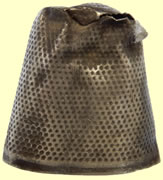 |
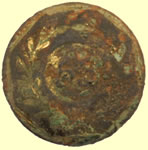 |
||||||||||
| 1247 Henry III hammered silver voided long cross half penny | Victorian silver thimble | 55th Regiment of Foot Officer - 1800-1820 |
||||||||||
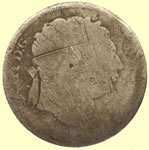 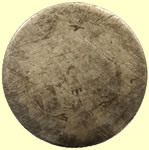 |
 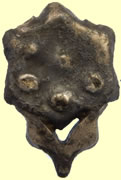 |
|||||||||||
| 1816 George III milled silver sixpence | Victorian silver pendant | |||||||||||
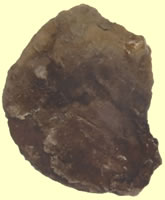 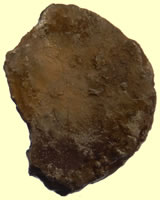 |
  |
|||||||||||
| 2ndC Roman silver coin - needs cooking to remove crust | 1938 George VI milled silver sixpence | |||||||||||
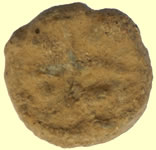 |
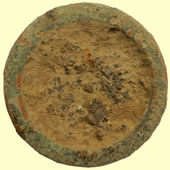 |
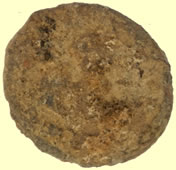 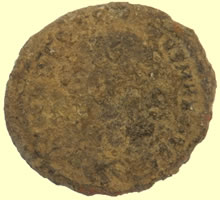 |
||||||||||
| 15thC lead token - type 2 | Georgian trade weight | Roman bronze coin sent for ID | ||||||||||
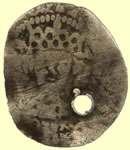 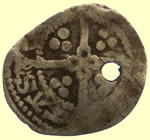 |
  |
|||||||||||
1413-22 Henry V hammered silver penny Double satire stop on obverse Quadrefoil with pellet at centre on reverse cross York mint Archiepiscopal issue
|
1929 George V milled silver half crown (30 pence) | |||||||||||
Huge 3rd-4th C Roman crossbow brooch
|
||||||||||||
  |
 |
 |
||||||||||
| 1931 George V milled silver sixpence | Georgian bell trade weight | 1500-1700 mount | ||||||||||
|
||||||||||||
| 1803 Imperial Fire Insurance Company button | ||||||||||||
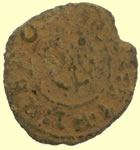  |
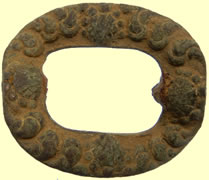 |
|||||||||||
| 1634 Charles 1st hammered copper rose farthing | ||||||||||||
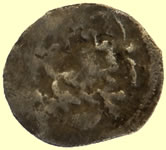 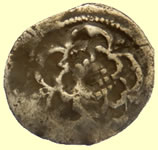 |
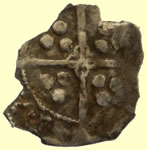 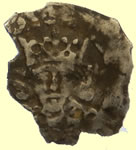 |
|||||||||||
| Tiny 1625 Charles 1st hammered silver half penny - rose both sides, no legend type | Oct 1470-April 1471 Henry VI hammered silver penny - Restoration period York Quadrefoil at centre of reverse cross - key by neck - Lis mint mark York mint |
|||||||||||
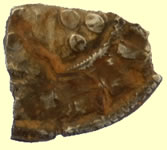 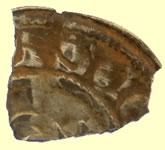 |
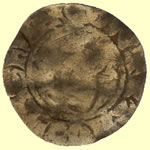 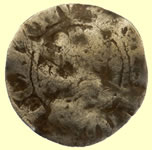 |
|||||||||||
Medieval continental sterling hammered silver penny Obv SCE*** |
1279 Edward 1st hammered silver long cross penny Obv + EDWAR ANGL DNS hYB Rev CIVI/TAS/LON/DON - London mint |
|||||||||||
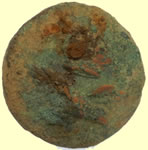 |
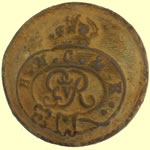 |
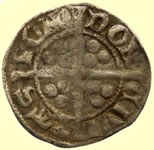 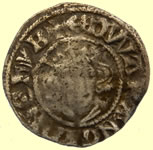 |
||||||||||
| WWII Royal Air Force button | George V HM.C & E His Majesty Customs and Excise button |
1279 Edward 1st hammered silver long cross penny Obv +EDWAR ANGL DNS hYB Rev CIVI/TAS/LON/DON - London mint |
||||||||||
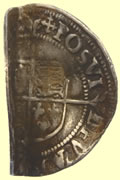 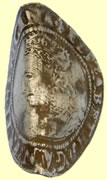 |
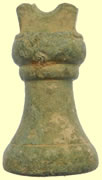 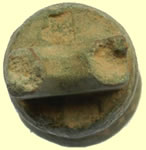 |
|||||||||||
1560-1 Elizabeth 1st hammered silver groat ( 4 pence) Cross Crosslet mint mark |
Georgian bell trade weight | |||||||||||
1000 BC Bronze age socketed axe fragment |
||||||||||||
Huge 16thC Elizabeth 1st half pound lead trade weight - 7.4oz. 46mm dia Crown EL and London mark |
||||||||||||
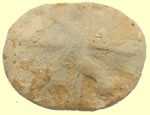 |
||||||||||||
| 15thC lead token | 1904 - 1937 London Fire Brigade button | 19thC livery button | ||||||||||
 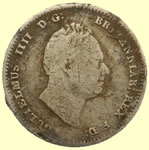 |
 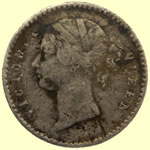 |
|||||||||||
| 1836 William IV milled silver four pence | India 1841 Victoria milled silver two Anna | |||||||||||
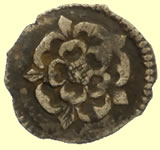 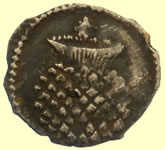 |
 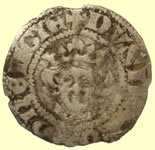 |
|||||||||||
| Tiny 1604-5 James 1st hammered silver half penny - Lis mint mark | 13thC hammered silver sterling imitation - Continental, Sterling type Ferry IV 1312-28 Duke of Lorraine Obv + DVSDELOTOR ENGIE Rev NVM/CRV/CIS/SIG Ref Mayhew 309 |
|||||||||||
Huge 1stC Colchester type two piece Roman brooch |
||||||||||||
 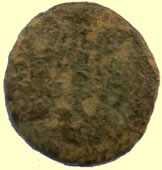 |
 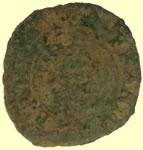 |
|||||||||||
| Mid 4thC House of Constantine Roman bronze coin | 1634 Charles 1st hammered copper rose farthings | |||||||||||
 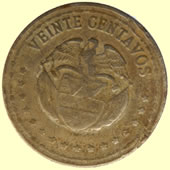 |
  |
|||||||||||
1963 Colombia milled copper nickle coin 20 Centavos |
17thC William III milled silver sixpence | |||||||||||
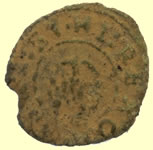 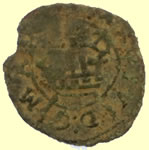 |
  |
|||||||||||
| 1634 Charles 1st hammered copper rose farthing | 1878 Victoria milled silver sixpence | |||||||||||
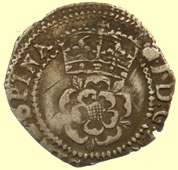 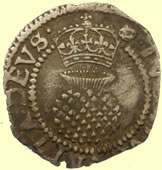 |
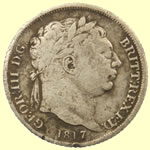 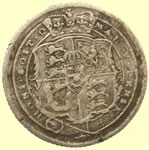 |
|||||||||||
| 1615-16 James 1st hammered silver half groat - Tun mint mark | 1817 George III milled silver sixpence | |||||||||||
 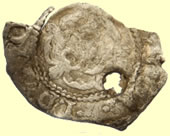 |
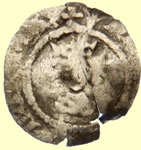 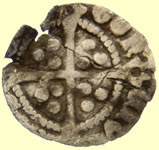 |
|||||||||||
| 1603 James 1st hammered silver penny | 1485 Henry VII hammered silver halfpenny - rev cross fourchee - wide hair bust - Type 3 single arched crown Rev CIVI/TAS/CAN/TOR - Canterbury mint |
|||||||||||
 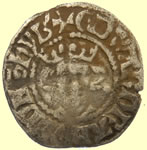 |
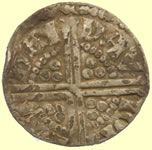 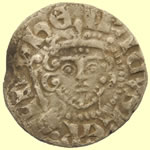 |
|||||||||||
1300 -1310 Edward 1st hammered silver long cross penny - Class 10ab - Pot hook N Obv +EDWARD R ANGL DNS hYB Rev CIVIT/TAS/LON/DON - London mint |
1247 Henry III hammered silver voided long cross penny - Class Vb Obv hENRICVS REX III Rev DAV/ION/LVN/DEN - Moneyer Davi of London mint |
|||||||||||
|
||||||||||||
| 16thC Tudor seal spoon handle | ||||||||||||
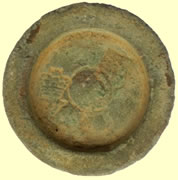 |
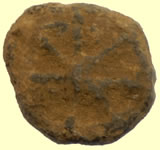 |
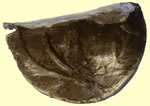 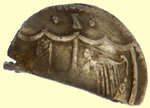 |
||||||||||
| 17thC William III trade weight - Crown W cipher | 15thC lead token | 1649 Commonwealth hammered silver penny | ||||||||||
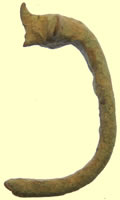  |
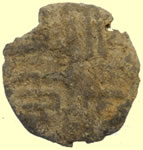 |
 |
||||||||||
| 2ndC Roman fibular brooch | 17thC lead token | Cast copper alloy double-looped sub-annular shoe or knee buckle Circa 1650-1720 |
||||||||||
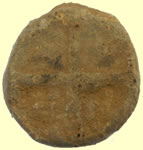 |
 |
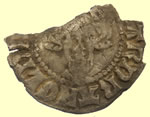  |
||||||||||
| 15thC lead token | 1500-1700 mount | 1300 -1310 Edward 1st hammered silver long cross penny - Class 10ab Obv +EDWARD R ANGL DNS hYB Rev CIVIT/TAS/CAN/TOR - Canterbury mint |
||||||||||
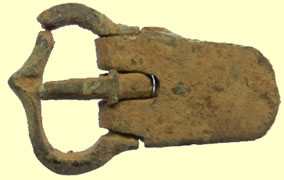 |
 |
|||||||||||
| Medieval strap end buckle | Edwardian brooch | |||||||||||
| 2- Victorian Glascow Corporation Transport Dept buttons | Georgian silver button with galss stone | |||||||||||
 |
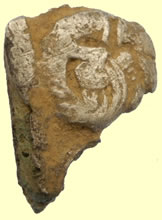 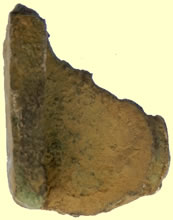 |
|||||||||||
| 1500-1700 mount | c10thC Anglo Saxon looking bronze fragment with silver inlay | |||||||||||
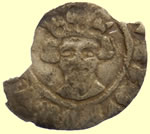  |
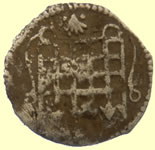 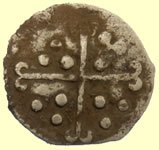 |
|||||||||||
1279 Contemporary forgery of an Edward 1st hammered silver penny - crudely stuck bust and lettering Rev LOM/BON |
1584-6 Elizabeth 1st hammered silver half penny - Escallop mint mark | |||||||||||
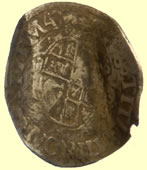 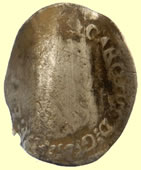 |
  |
|||||||||||
| 1625 Charles 1st hammered silver half groat | 16thC Elizabeth 1st hammered silver sixpence fragment | |||||||||||
Medieval finger ring |
||||||||||||
 |
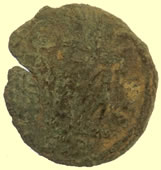 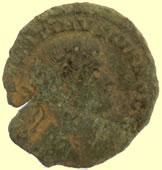 |
|||||||||||
| 1500-1700 mount | 19thC livery button | Mid 4thC House of Constantine Roman bronze coin - two soldiers standing | ||||||||||
Romano/British bronze clothing toggle ? |
||||||||||||
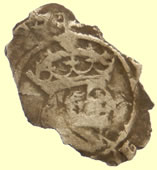 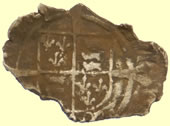 |
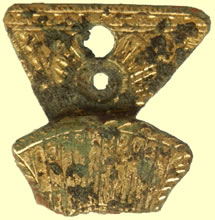 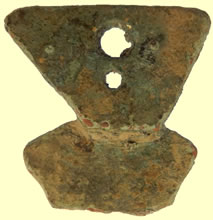 |
|||||||||||
| 1485 Henry VII hammered silver groat | C10thC Saxon gilded mount | |||||||||||
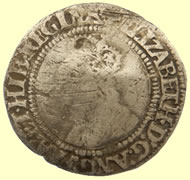  |
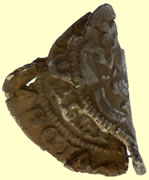 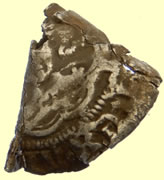 |
|||||||||||
1560-1 Elizabeth 1st hammered silver groat ( 4 pence) Cross Crosslet mint mark |
1327 Edward III hammered silver groat | |||||||||||
 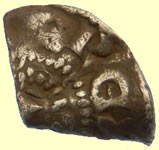 |
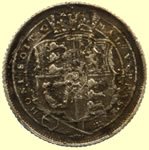 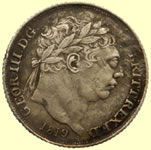 |
|||||||||||
| 1247 Henry III hammered silver voided long cross half penny | 1819 George III milled silver sixpence | |||||||||||
Great eyeball find - 450 million year old fossil Sea Urchin Echinoid |
||||||||||||
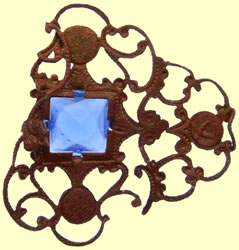 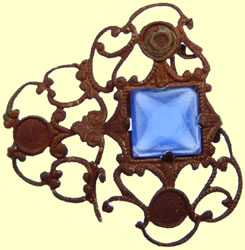 |
||||||||||||
| Vioctorian gilded copper brooch | ||||||||||||
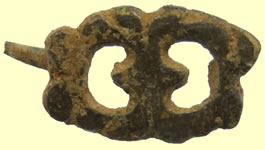 |
|
|||||||||||
| Victorian button | Medieval mount | Medieval pendant | ||||||||||
 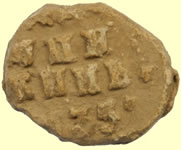 |
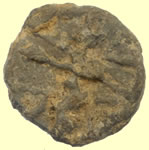 |
|||||||||||
| 1811 Russian lead bale seal | 17thC lead token | Victorian General Post Office button | ||||||||||
|
 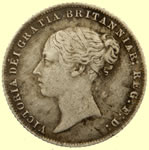 |
|||||||||||
18thC silver clasp - similar decoration to Hester Bateman silver clog fastener |
1865 Victoria milled silver sixpence | |||||||||||
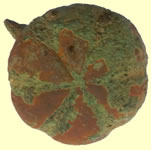 |
 |
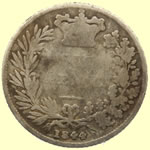 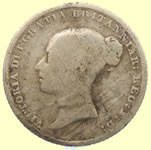 |
||||||||||
| A Late Medieval/ Early Post-Medieval (15th-early 16th century) cast one-piece copper-alloy mount, convex and cinquefoil in shape | 1600-1700 A copper-alloy cast mount. The mount is quatrefoil in shape with a cusp in each angle. The reverse has two attachment lugs. |
1844 Victoria milled silver sixpence | ||||||||||
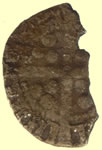  |
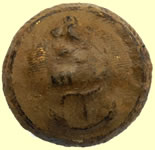 |
 |
||||||||||
1279 Edward 1st hammered silver long cross penny fragment Rev DE/- Durham mint |
Victorian Cunard lookinng shipping line button Lion holding globe above anchor |
Medieval buckle | ||||||||||
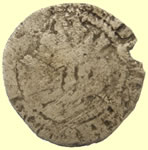  |
 |
|||||||||||
1279 Edward 1st hammered silver long cross penny fragment Rev DON/- London mint |
18thC clog fastener | |||||||||||
Double side Georgian seal matrix Obv Crest of Arms Rev Bust facing right |
||||||||||||
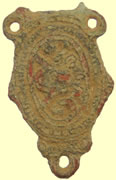 |
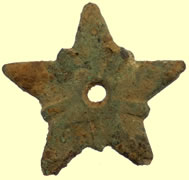 |
|||||||||||
| 18thC Royal Navy silver button | 17thC clothing fastener | 16thC Tudor button | Post medieval spur rowel | |||||||||
Huge 1st C Roman fibular brooch- Colchester type 80mm L |
||||||||||||
Post medieval copper cruifix |
||||||||||||
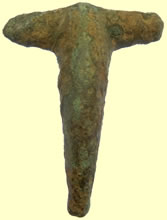 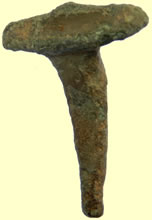 |
 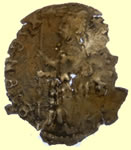 |
|||||||||||
| 1st C Roman fibular brooch- Dolphin type | 15th/16th Venetian hammered silver soldino Type 3 |
|||||||||||
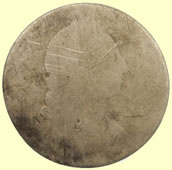 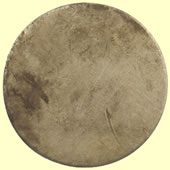 |
|
|||||||||||
| 17thC William III milled silver sixpence | Post medieval clasped hands copper ring | |||||||||||
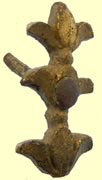 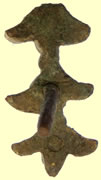 |
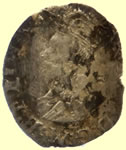 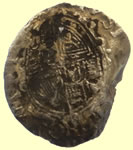 |
|||||||||||
| 1500-1700 mount | 1625 Charles 1st hammered silver penny love token | |||||||||||
 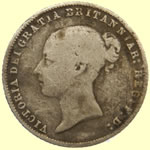 |
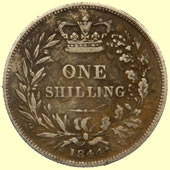 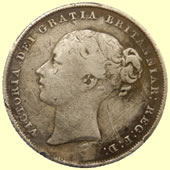 |
|||||||||||
| 1859 Victoria milled silver sixpence | 1844 Victoria milled silver shilling | |||||||||||
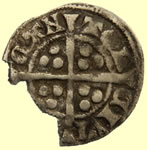 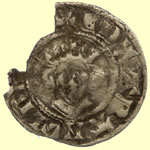 |
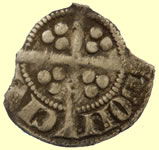 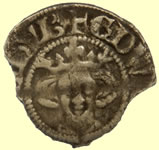 |
|||||||||||
1279 Edward 1st hammered silver long cross penny Obv +EDWAR ANGL DNS hYB Rev CIVI/TAS/CAN/TOR - Canterbury mint |
1279 Edward 1st hammered silver long cross penny Obv +EDW*****hYB Rev CIVI/TAS/LON/DON - London mint |
|||||||||||
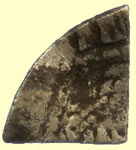 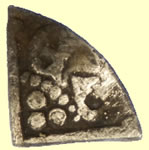 |
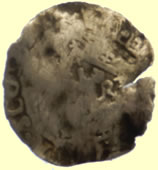 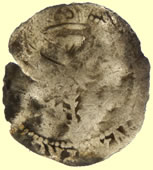 |
|||||||||||
| 1247 Henry III hammered silver voided long cross farthing | Scottish 1602 James VI hammered silver 1/8th Thistle Merk | |||||||||||
16thC stone cannon ball - 2 inch calibre |
||||||||||||
 |
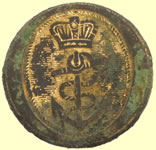 |
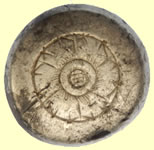 |
||||||||||
| WWII Royal Air Force silver sweet heart badge | RN Capt / Commander - 1812 RN Lieutenant - 1812 RN Midshipman - 1812 RN Volunteer Gr.I - 1812 After this issue a Midshipman will have the Captain's style |
18thC Royal Navy silver button | ||||||||||
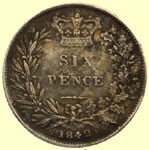 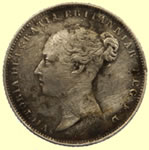 |
 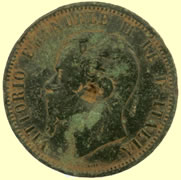 |
|||||||||||
| 1842 Victoria milled silver sixpence | 1866 Italian Emanyele II 10 Centimes copper coin | |||||||||||
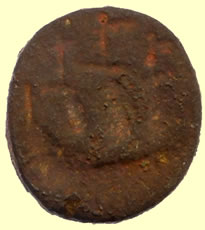 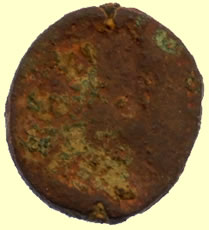 |
||||||||||||
Double side Georgian seal matrix Obv Masted sailing ship facing right Rev Bust facing right |
||||||||||||
|
  |
|||||||||||
| 1634 Charles 1st hammered copper rose farthings | 16thC Elizabeth 1st hammered silver sixpence | |||||||||||
 |
|
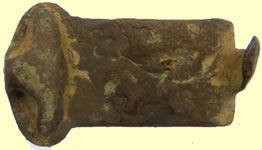 |
||||||||||
Unrecorded 5th Dragoon guards button Description: Crowned Hannover Horse over V D.G with VESTIGIA NULLA RETRORSUM around. Category: Dragoons Type of button: Slightly Convex; Metal: Copper Alloy, silver gilded. Backmark: ; Date: c1780-1796 Crimera war period The 5th Dragoons became Princess Charlotte of Wales's Dragoon Guards in 1804. |
20thC British railways buttons | 18thC clog fastener | ||||||||||
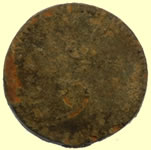 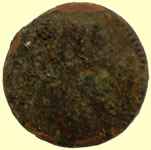 |
|
|||||||||||
1770's coin weight - 9 shillings Obv S 9 |
Medieval gilded bar mount | |||||||||||
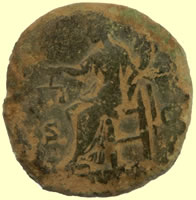 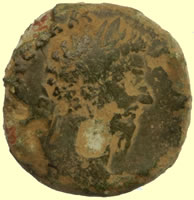 |
||||||||||||
Big 2ndC Roman bronze AS sent for ID Without a diameter or weight I can’t be certain whether the denomination is an as or a sestertius. The weights of Aurelius’ Æs were all over the place, too so a sestertius may be very similar to an as, varying only in relative overall diameter. In this era, it was typical for the same types to be struck on several – or all – of the denominations at the same time. Common types of reverses would be struck year after year as well so there is a little uncertainty here overall about the minutiae. What is certain is that this is Marcus Aurelius (161-180) the reverse type is Aequitas or Moneta enthroned left holding scales and cornucopiae. I’m not sure yet which it is – I’m not sure we can be certain in any case without a single letter of the reverse legend legible. (both may be seen with these same attributes, although Moneta generally stands – but Aequitas tends to be shown standing too, so…) http://www.stoa.org/gallery/album94/ML06_M_Aurel_Aequitas_sest?full=1 |
||||||||||||
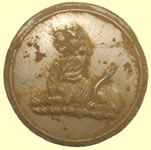 |
 |
 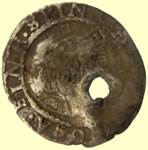 |
||||||||||
| 19thC livery button | 18thC clog fastener | 1574 Elizabeth 1st hammered silver penny | ||||||||||
1623 silver hawking ring 11mm,1.28g Thomas Playters.Eq The Playters Baronetcy, of Sotterley in the County of Suffolk, was a title in the Baronetage of England. It was created on 13 August 1623 for Thomas Playters and was one of the last baronetcies created by King James I.[1] The second Baronet was Vice-Admiral of Suffolk between 1640 and 1649.[2] The fifth Baronet served as High Sheriff of Suffolk in 1728. The title became extinct on the death of the eighth Baronet in 1832 |
||||||||||||
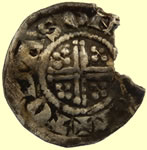 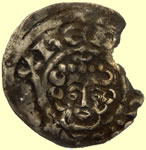 |
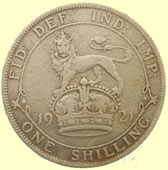 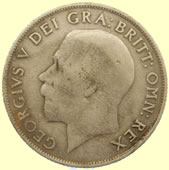 |
|||||||||||
1216 Henry III hammered silver short cross penny Obv hENRICVS REX Rev N + TOMAS.ON **** - Moneyer Thomas |
1921 George V milled silver shilling | |||||||||||
 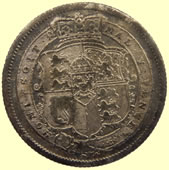 |
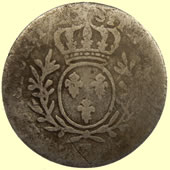 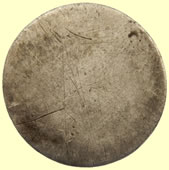 |
|||||||||||
| 1816 George III milled silver shilling | 1729 French Louis XV milled silver coin - 1/2 ECU (44 Sols) | |||||||||||
  |
 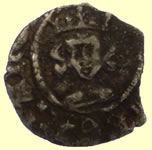 |
|||||||||||
| 1852 Victoria milled silver sixpence | 1377 Richard II hammered silver half penny- | |||||||||||
 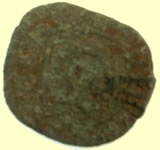 |
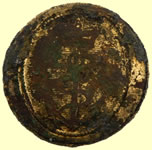 |
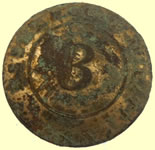 |
||||||||||
| 1634 Charles 1st hammered copper rose farthing | RN Capt / Commander - 1812 | '3rd Essex Local Militia gilt (b/m: Charles Jennens. London).
This is the 3rd Reg't of the Essex Local Militia. Tim' |
||||||||||
Ch Gretchen polished up what looked like a plain green copper ring but it turns out to be highly decorated. Too big and wrong shape for a finger ring - not sure of it's use? Decorated harness ring ? |
||||||||||||
 |
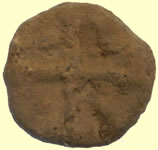 |
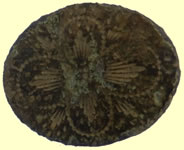 |
||||||||||
| 1500-1700 mount | 15thC lead token | Georgian button | ||||||||||
Previous Feb 2018 Finds pageNew April 2018 Finds page
|
||||||||||||

